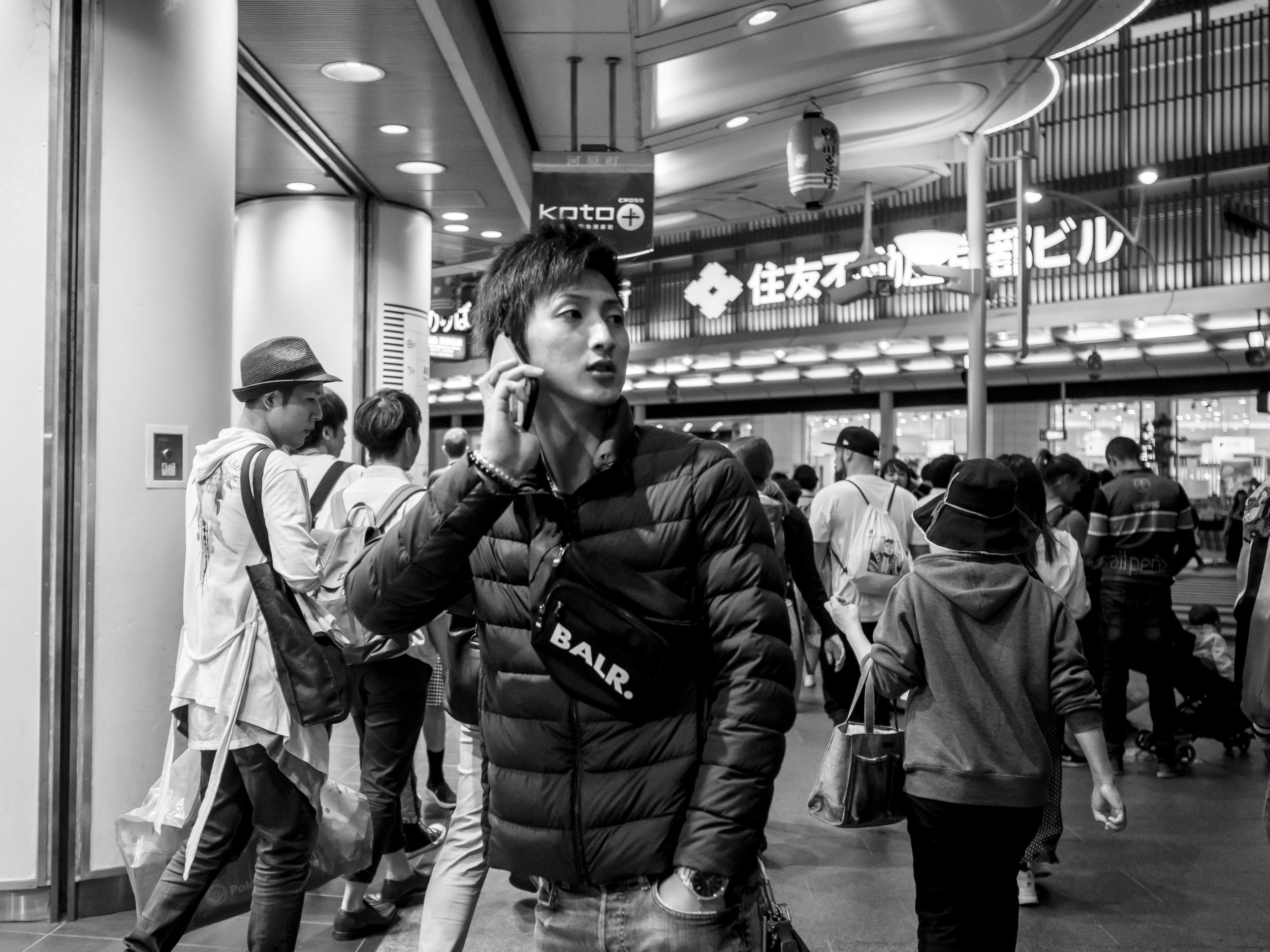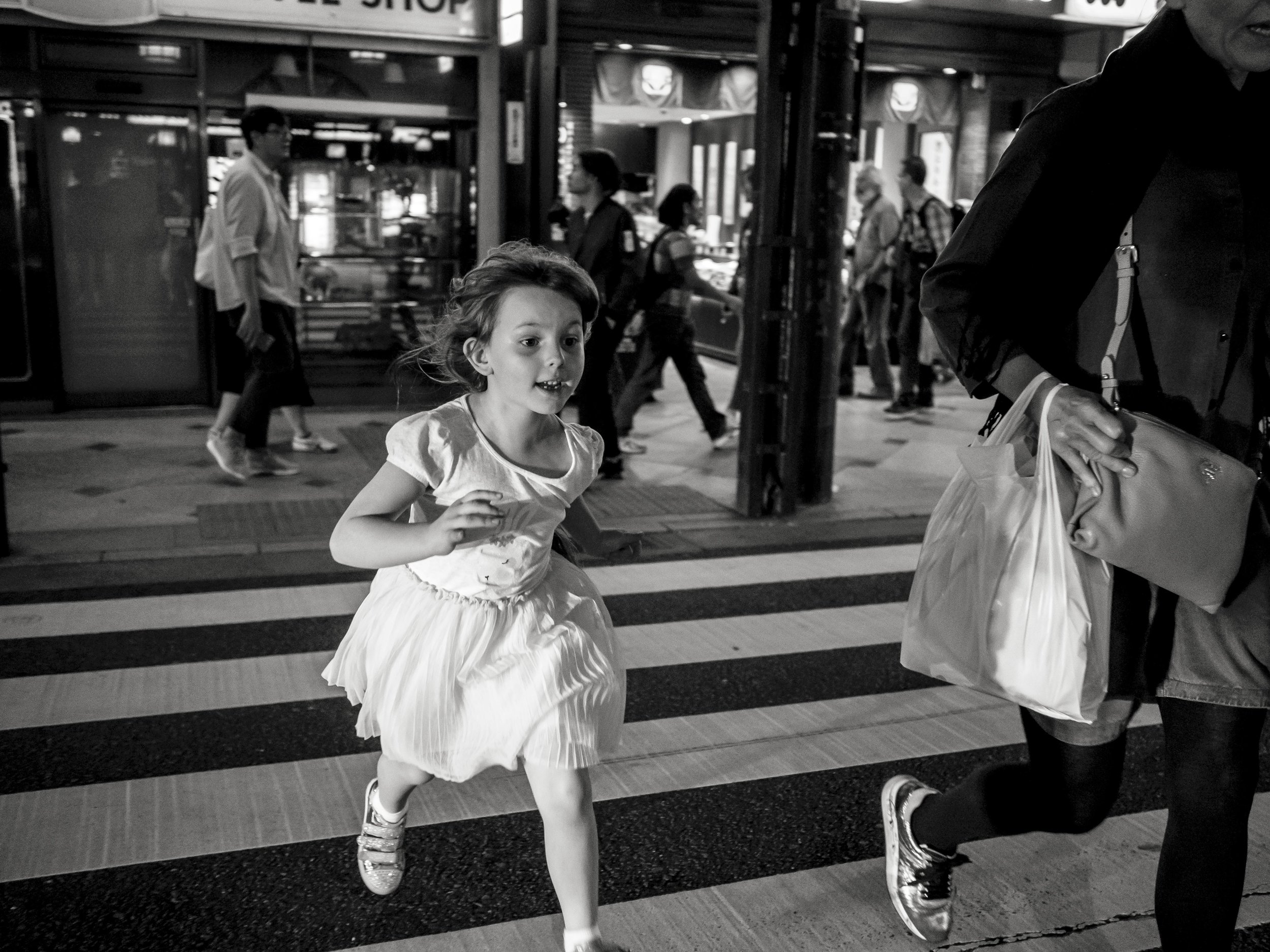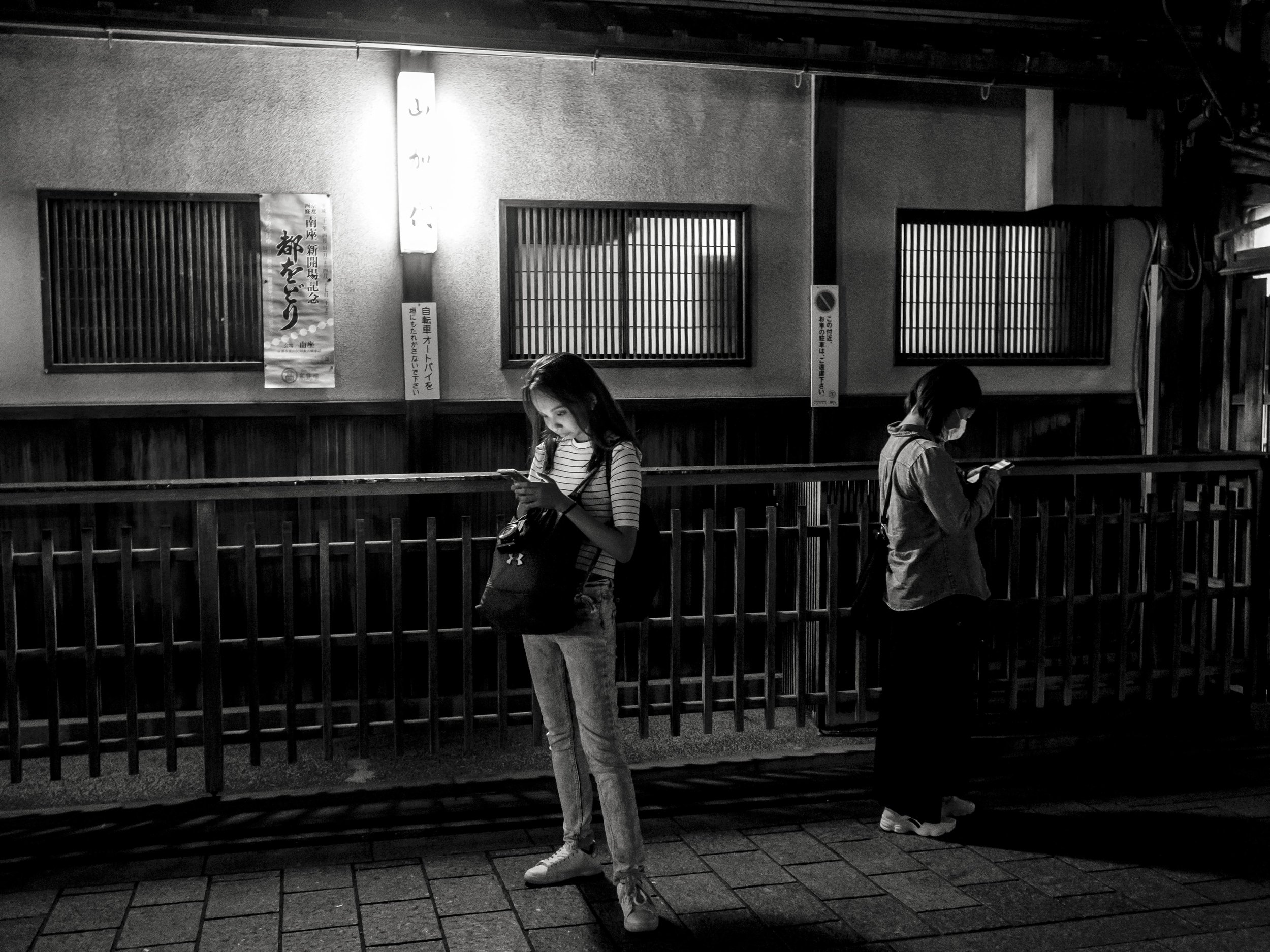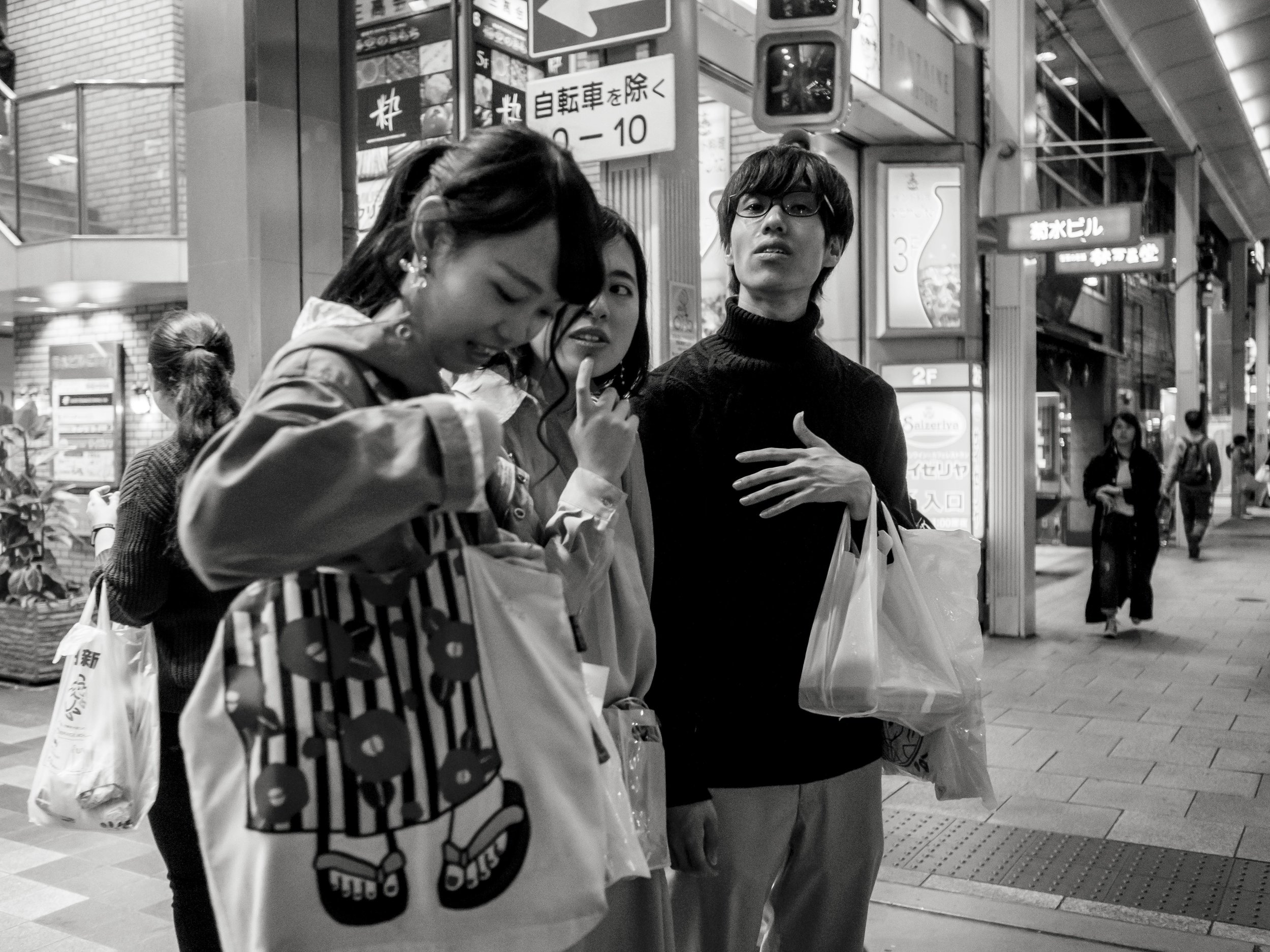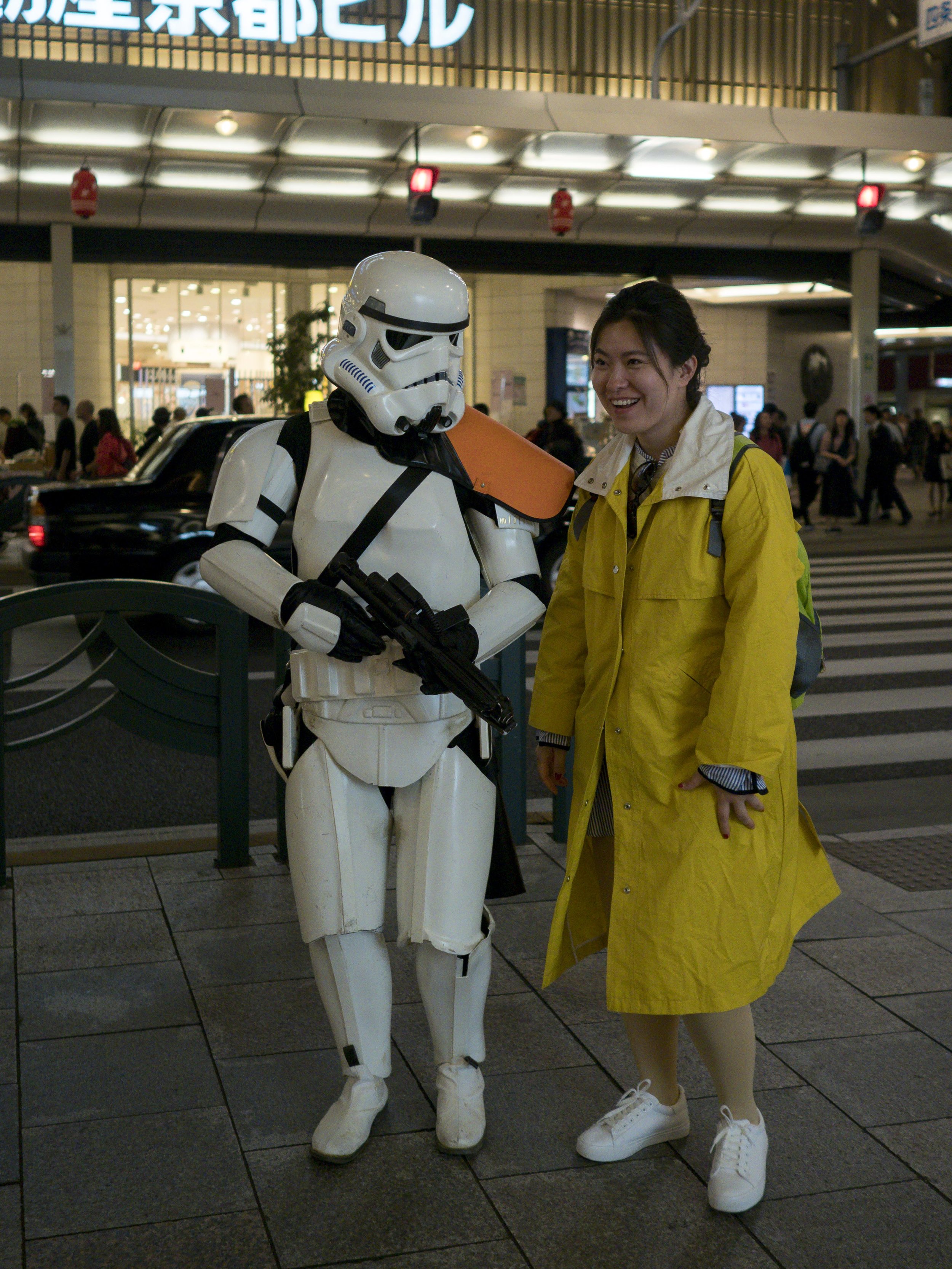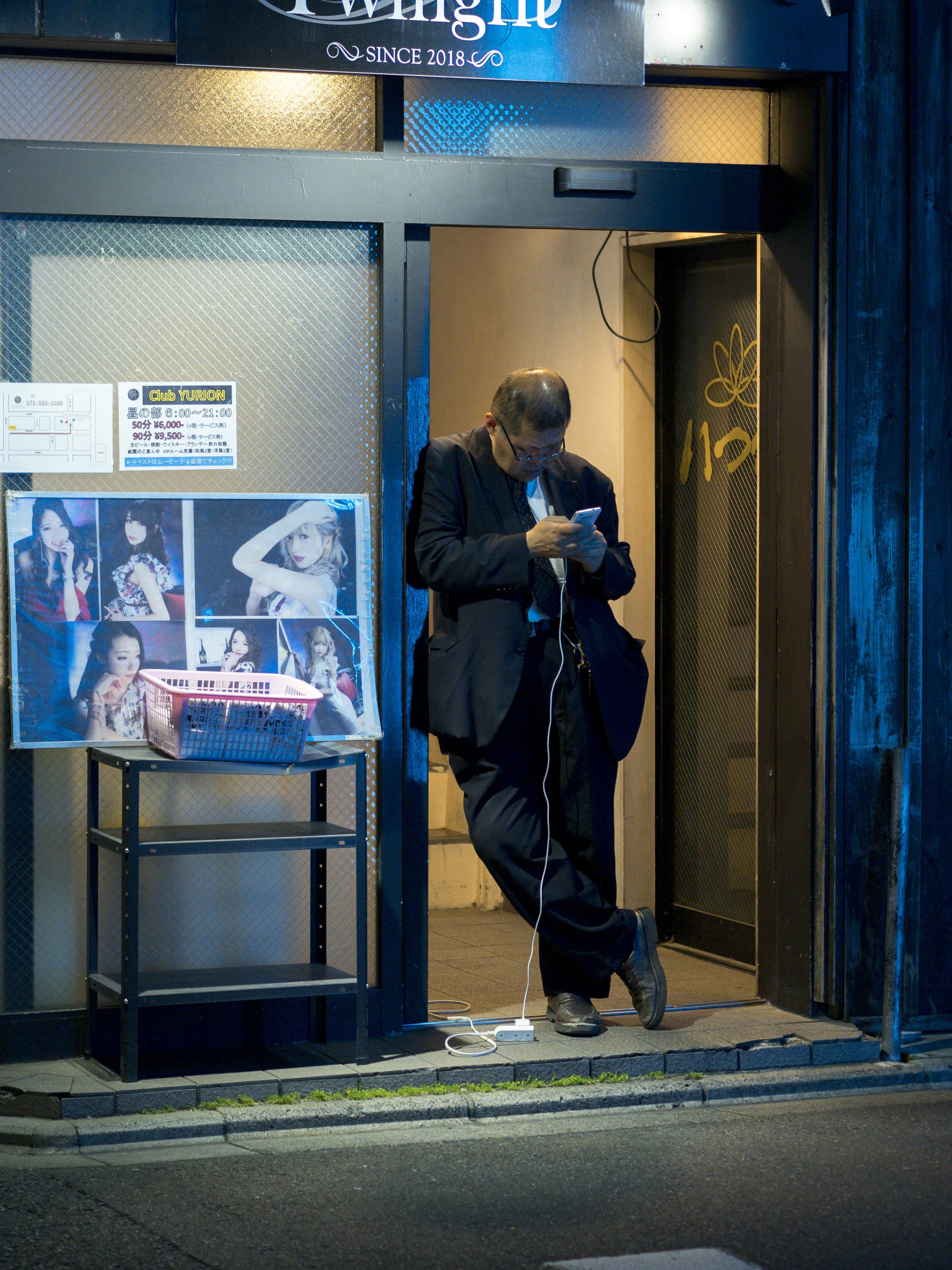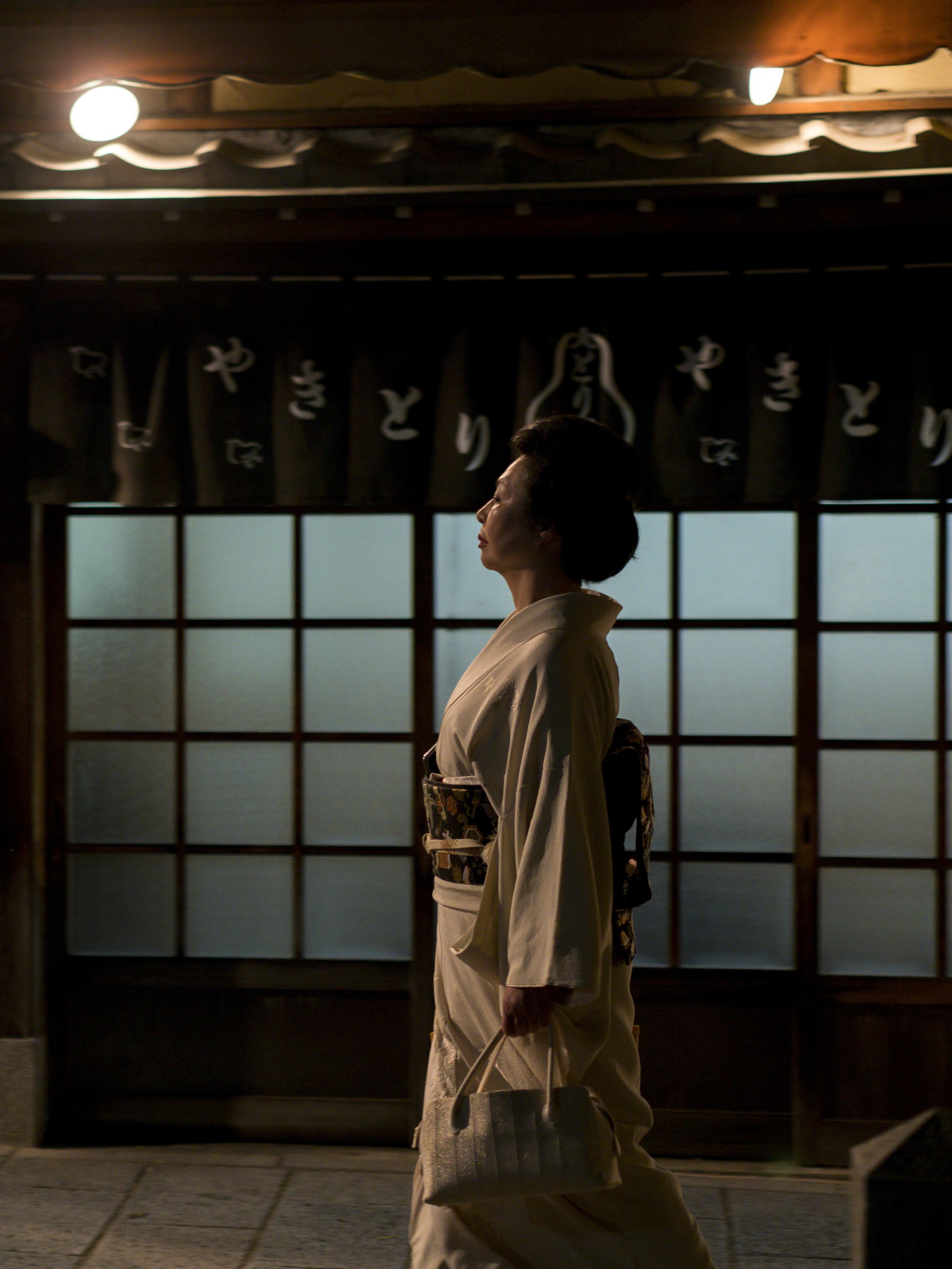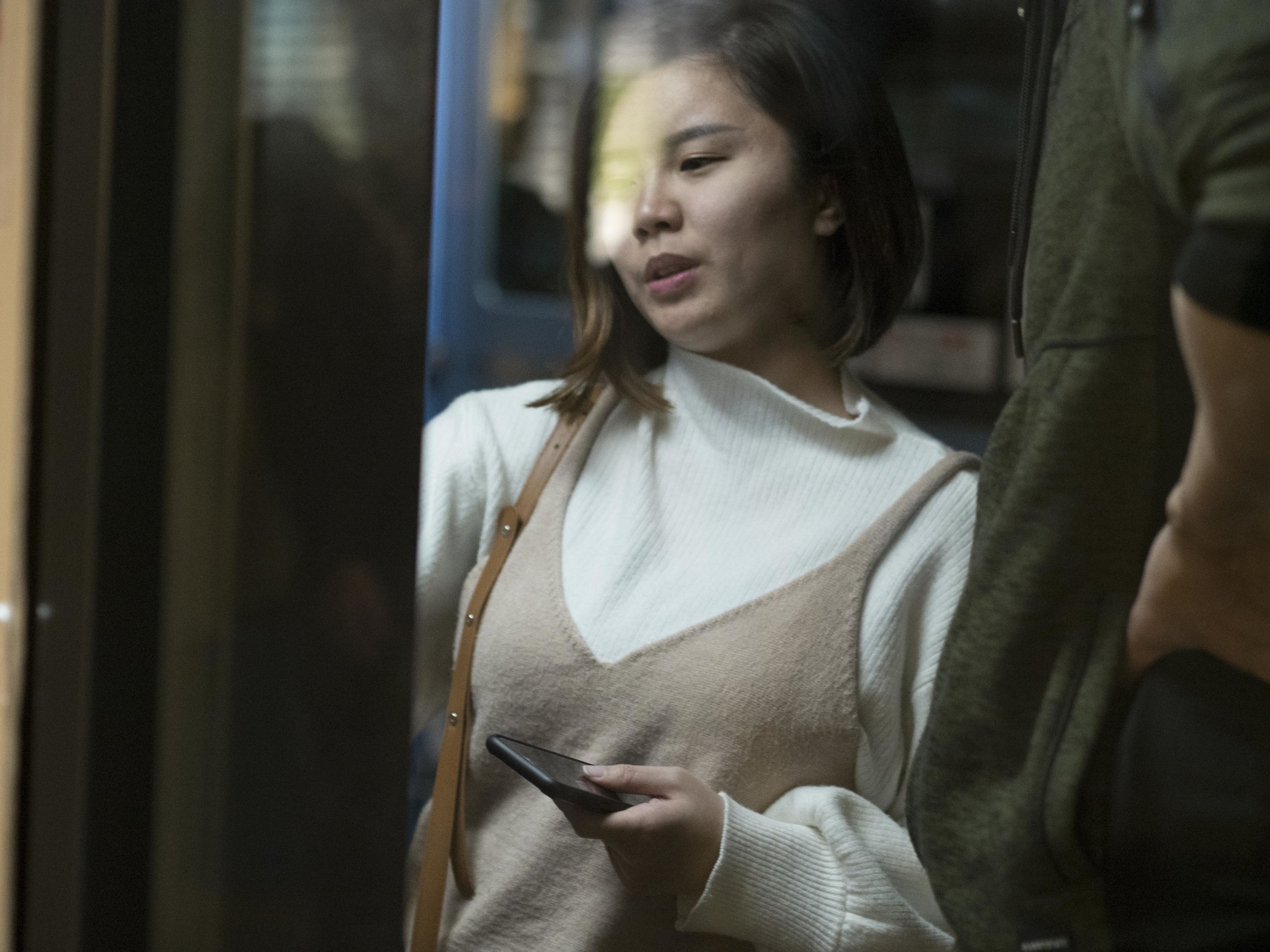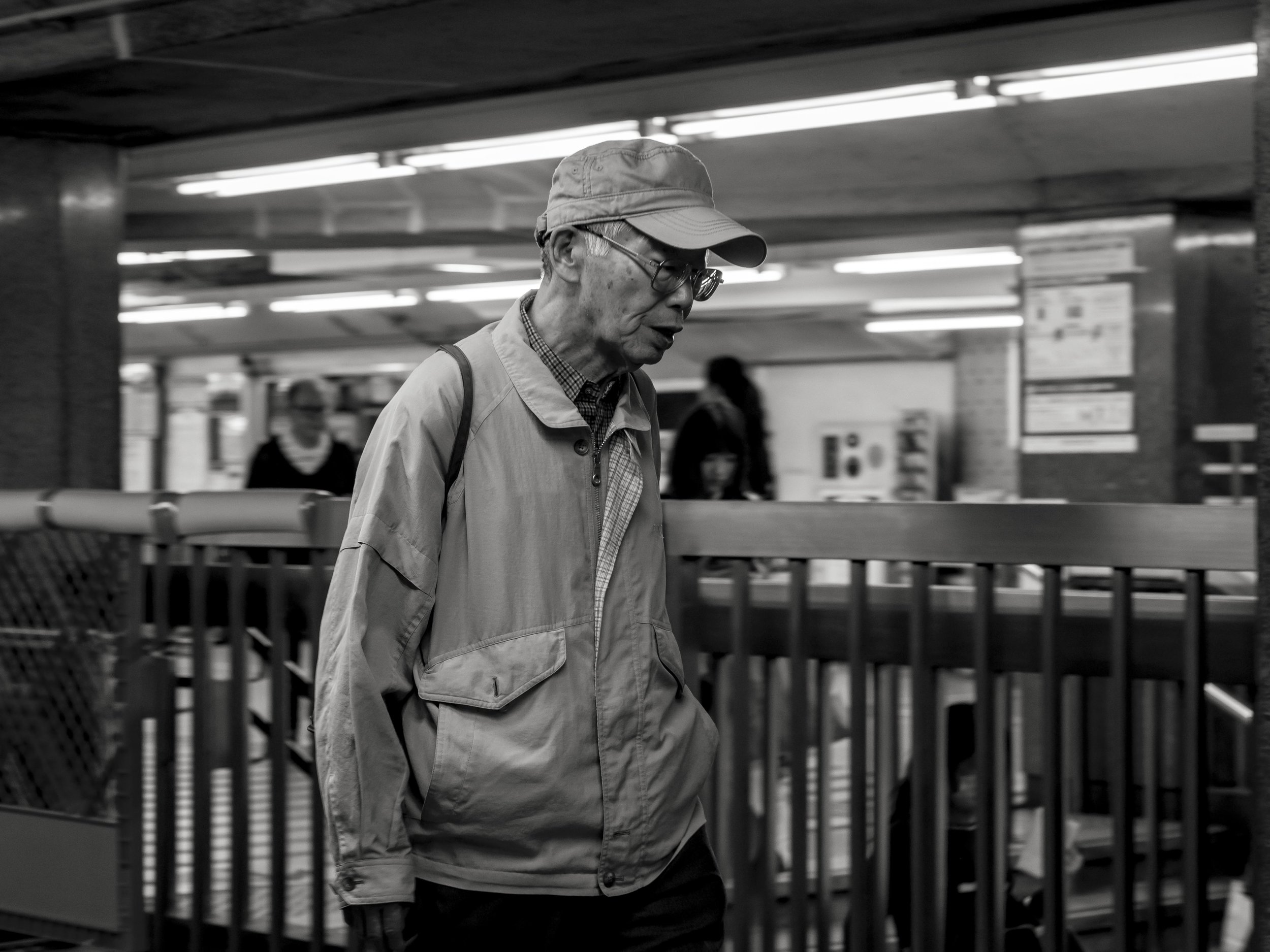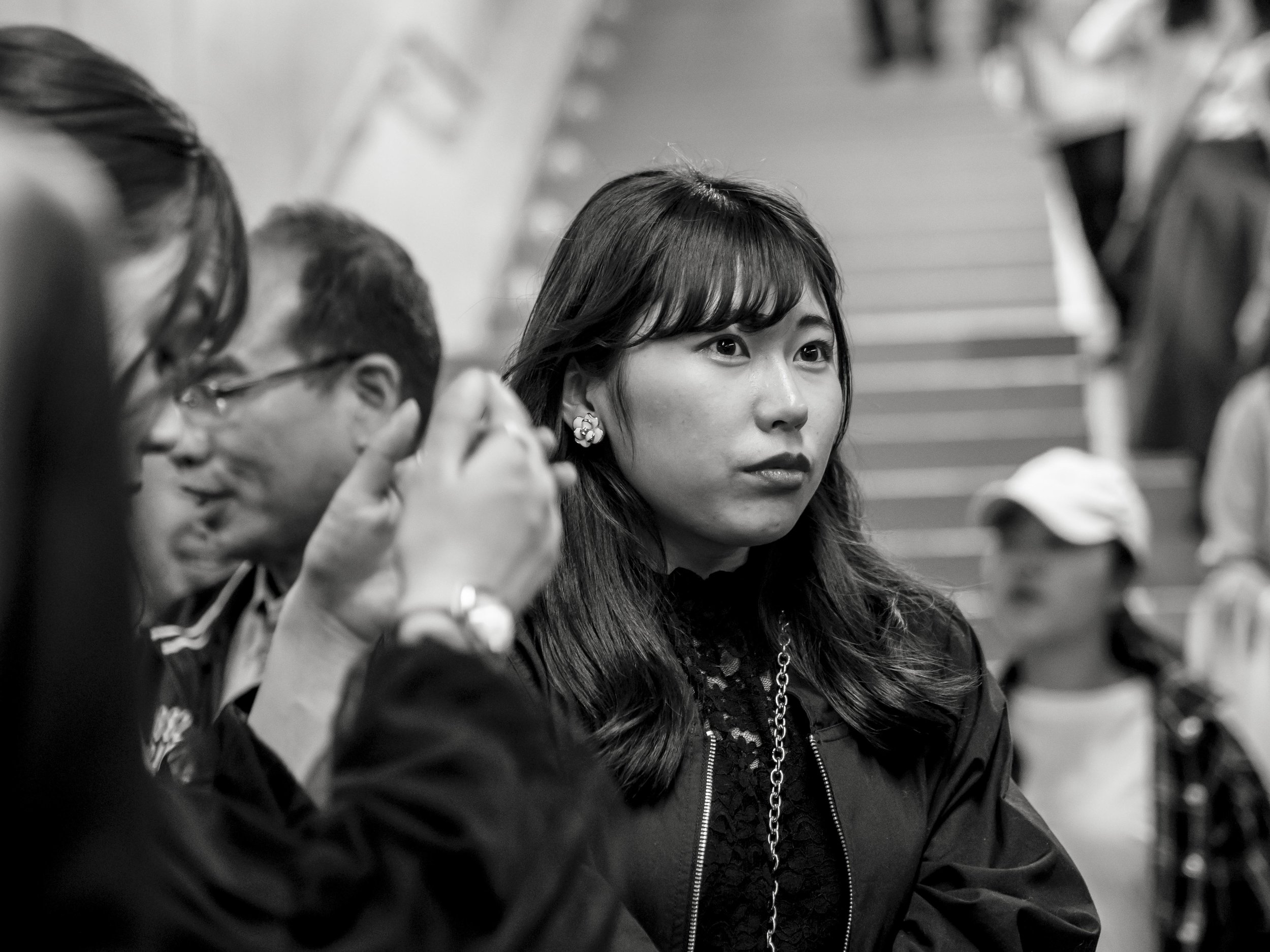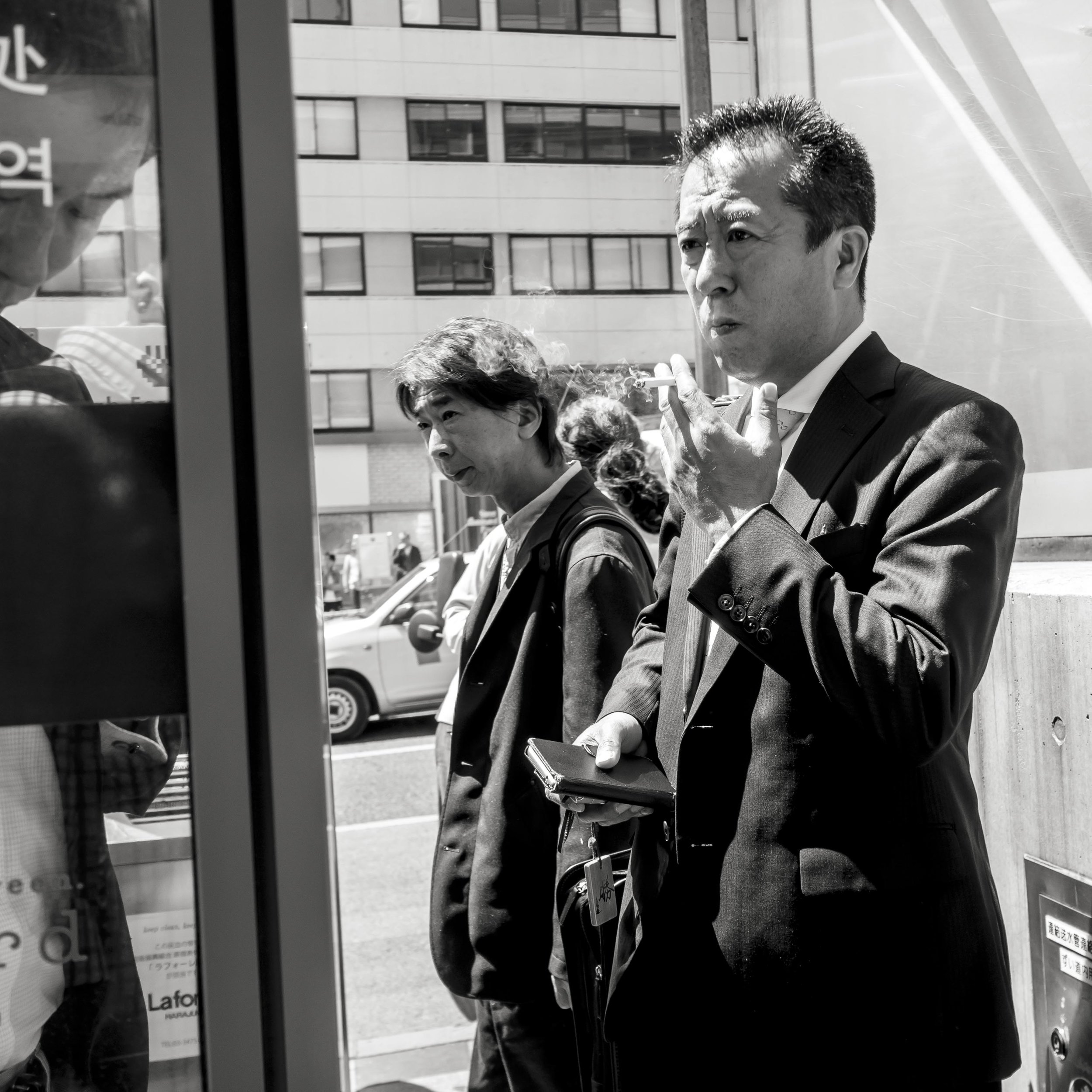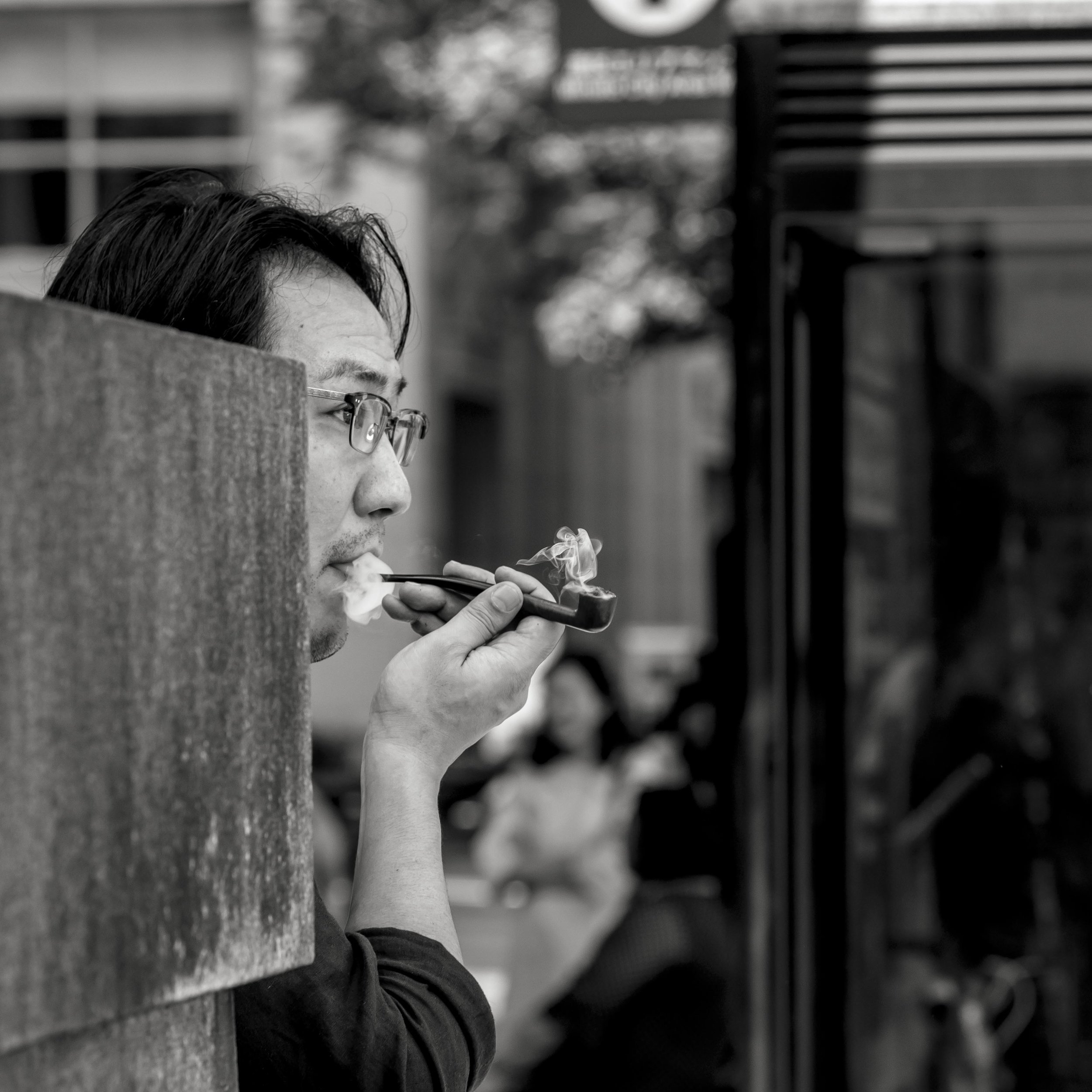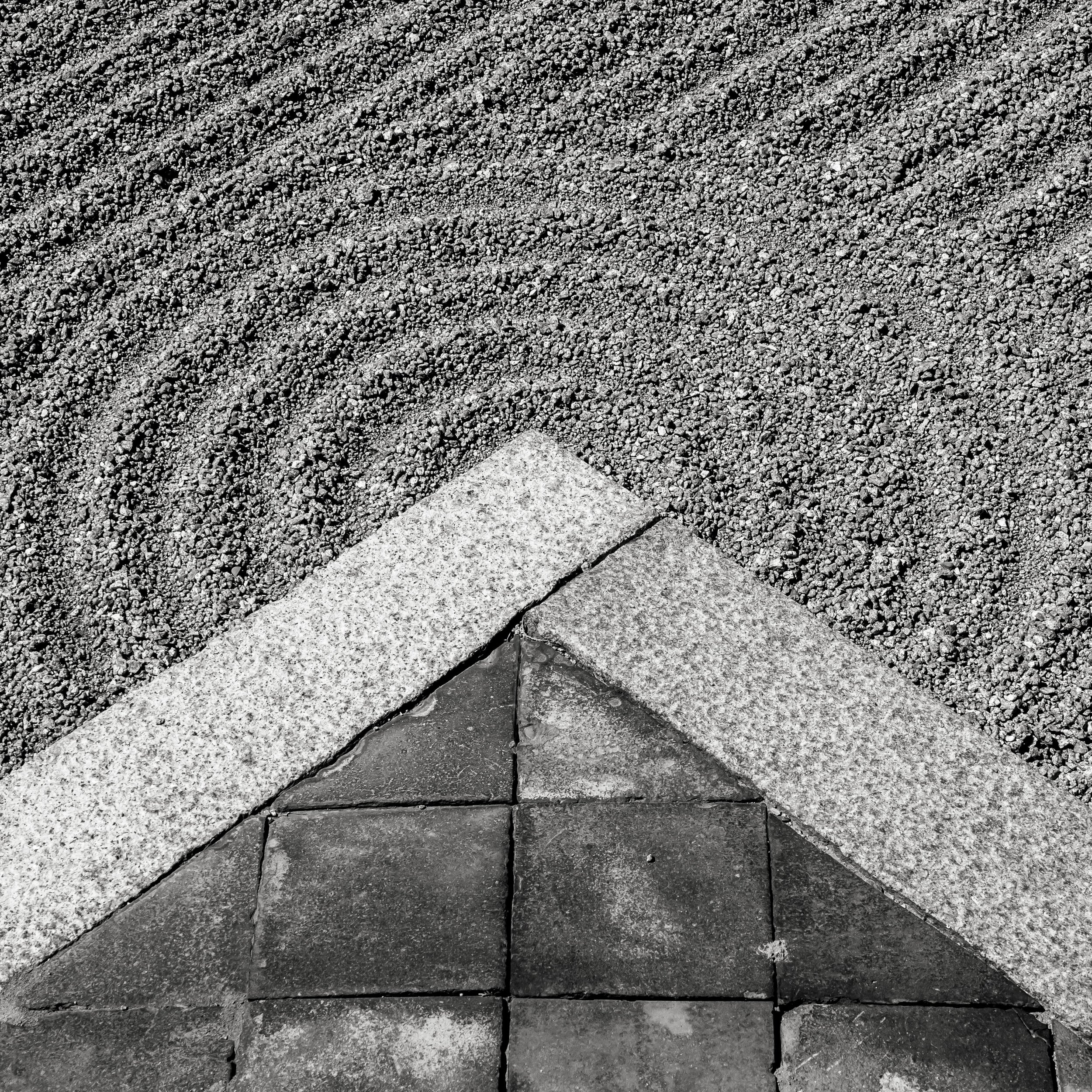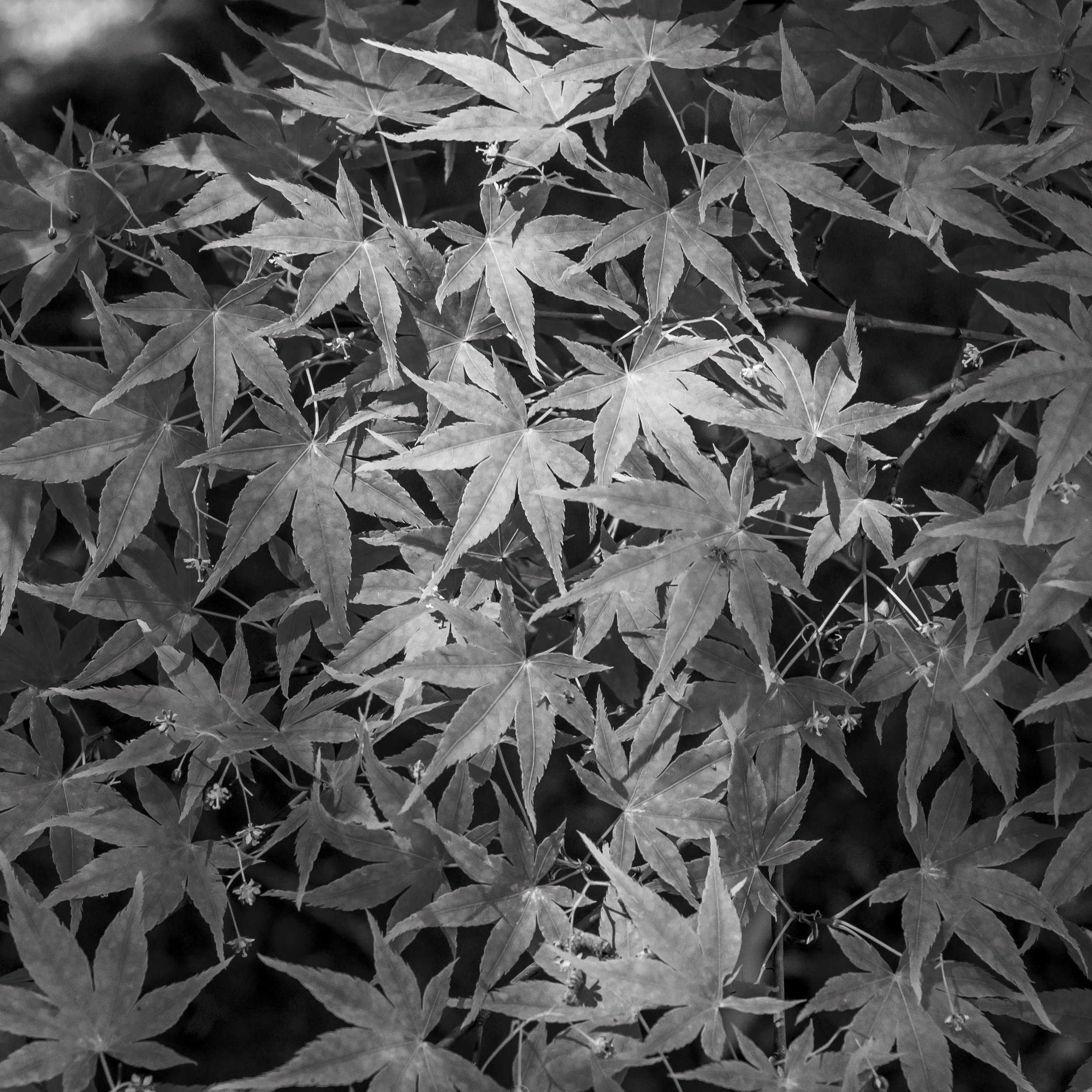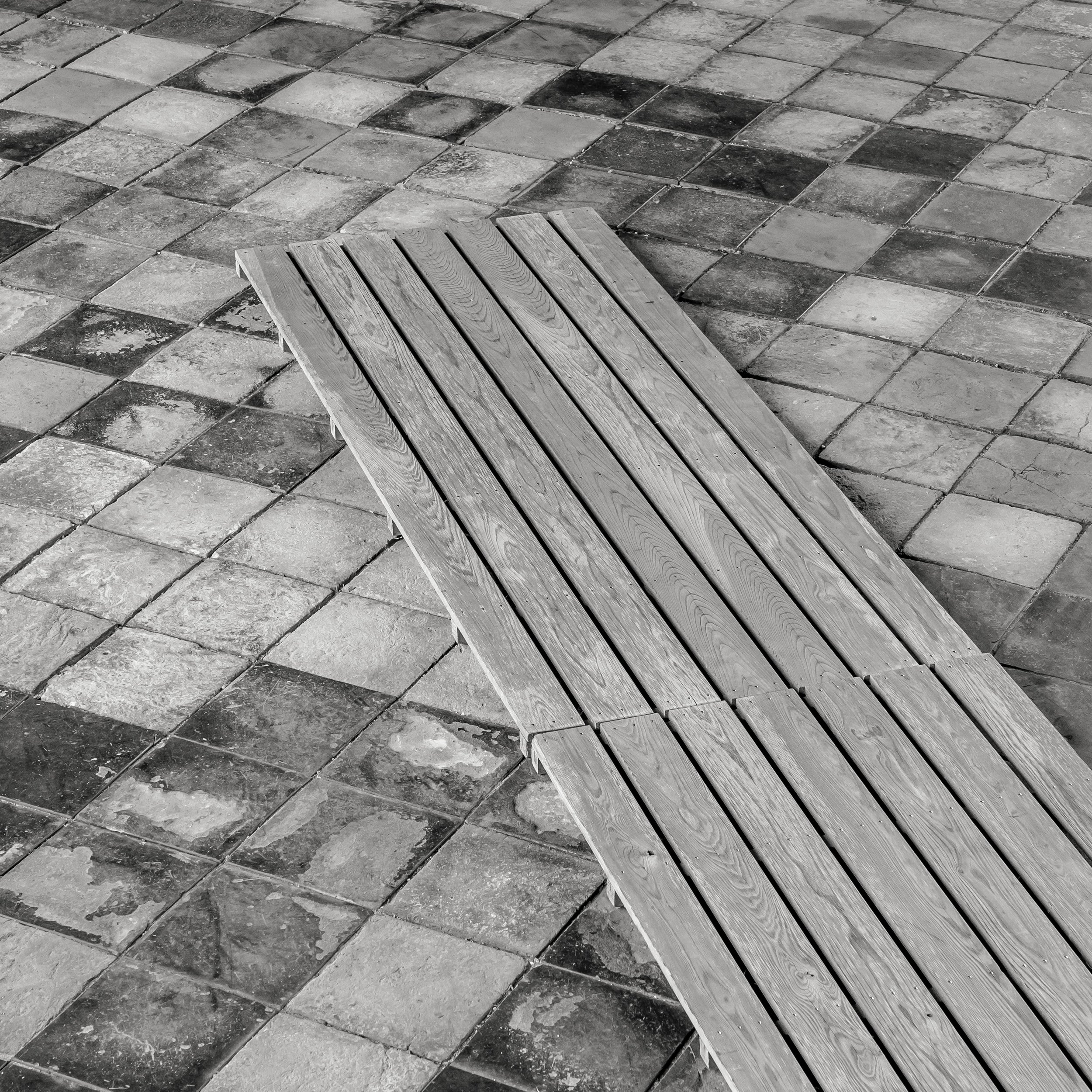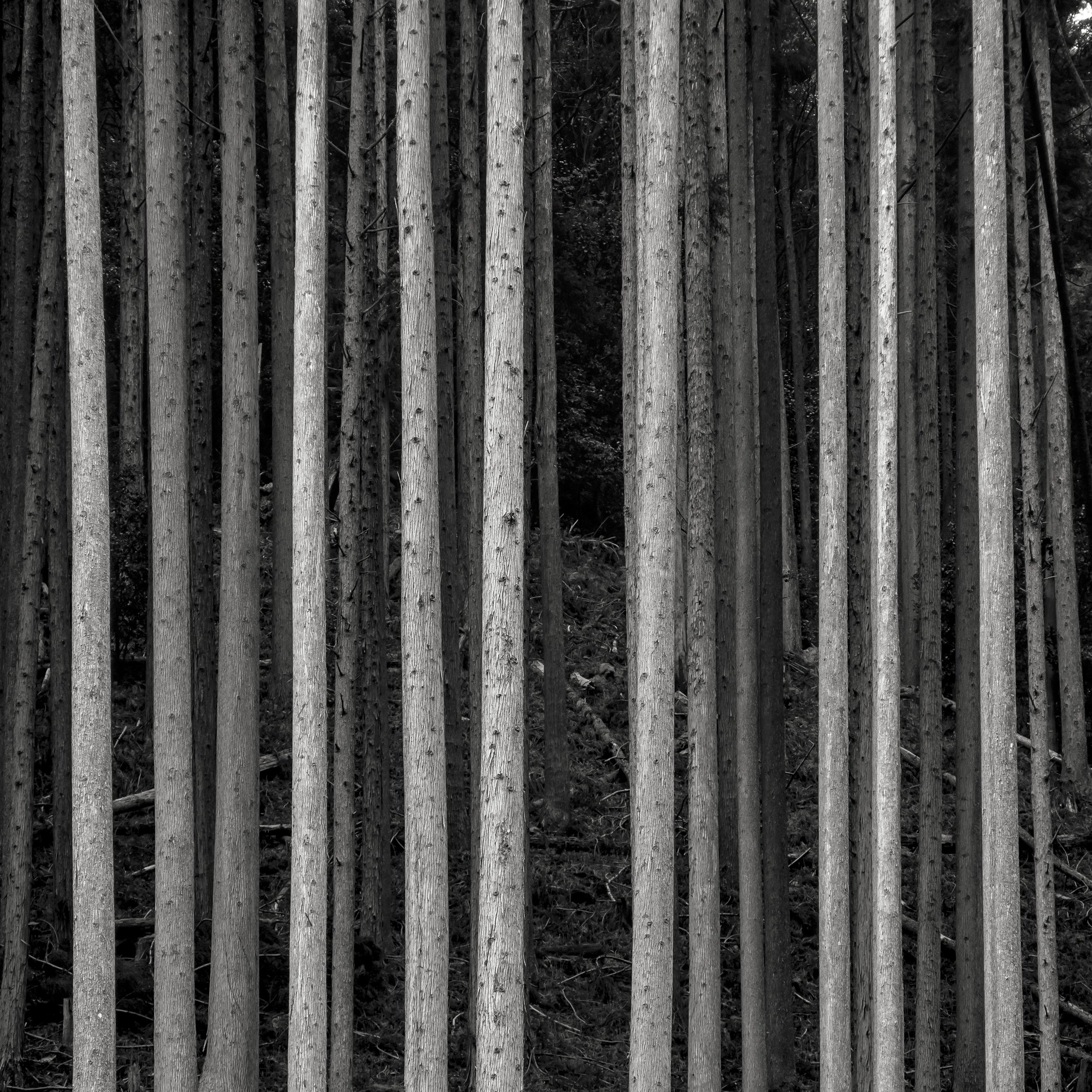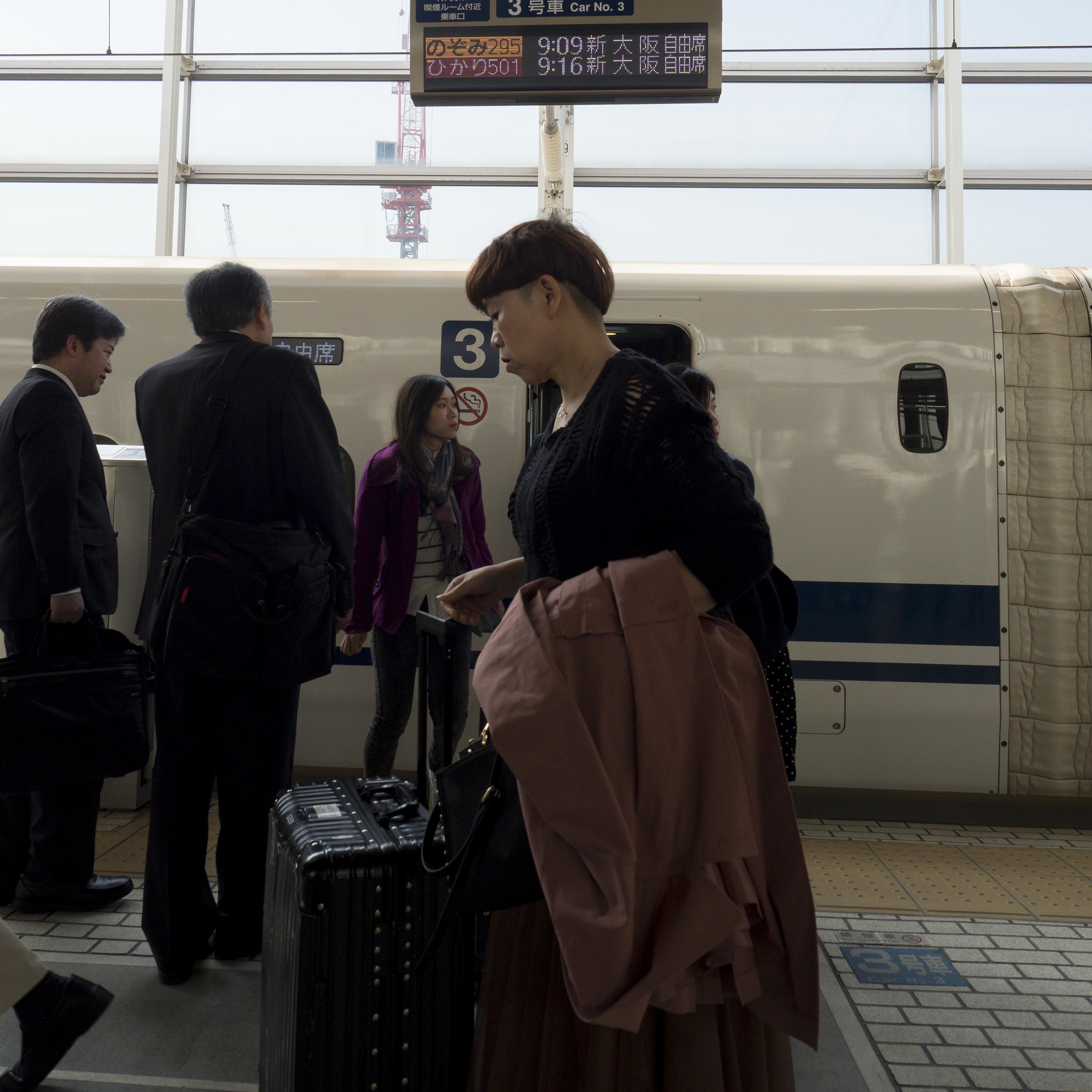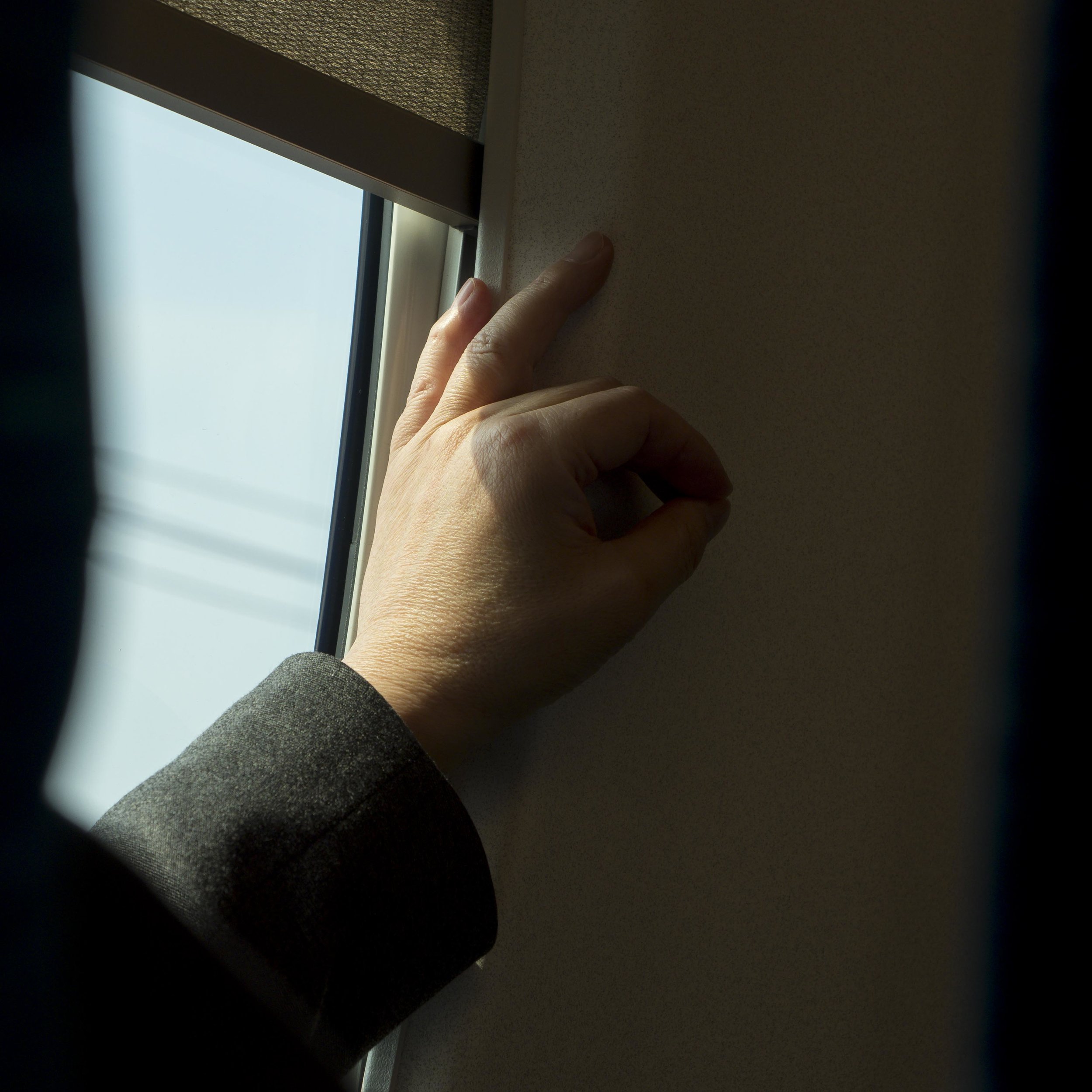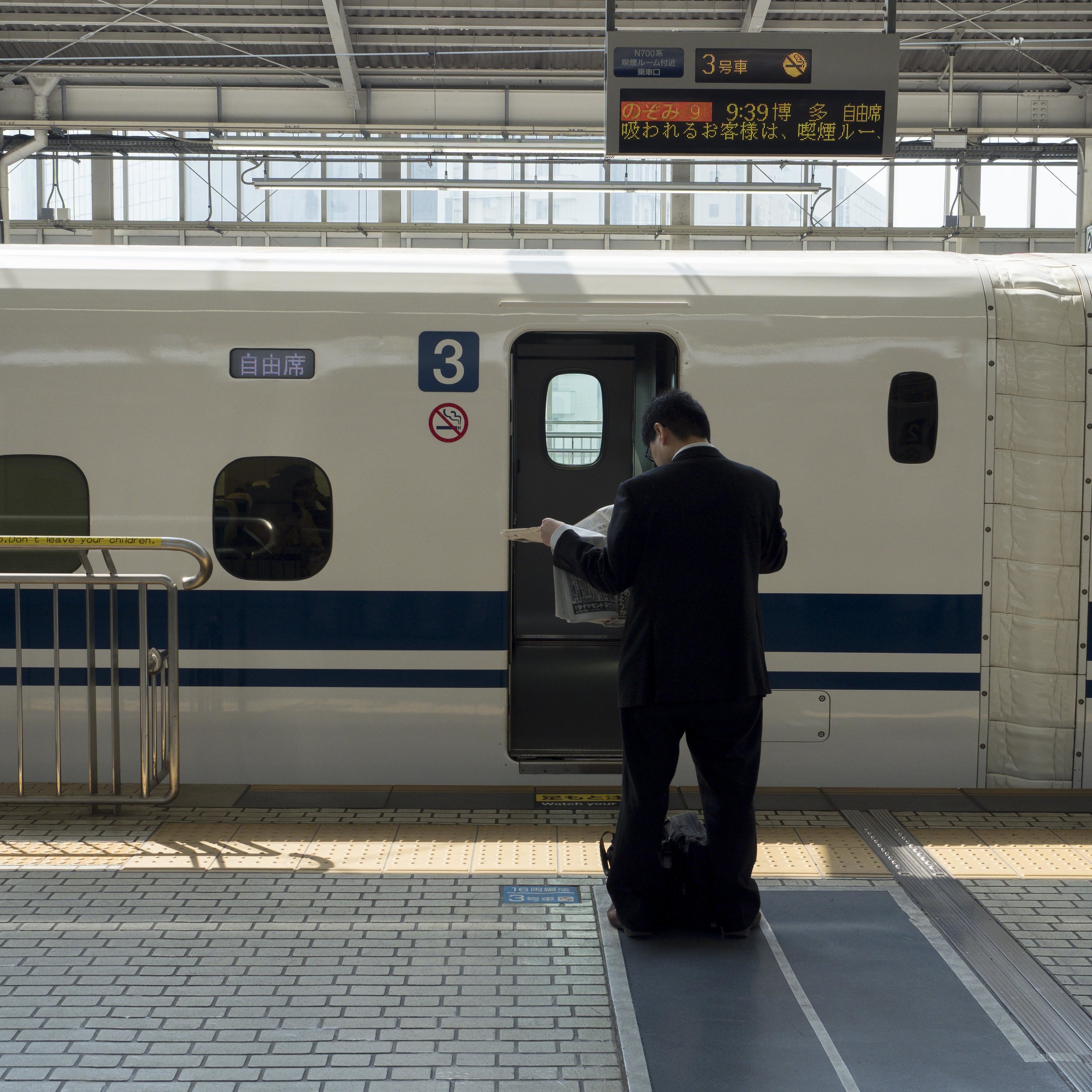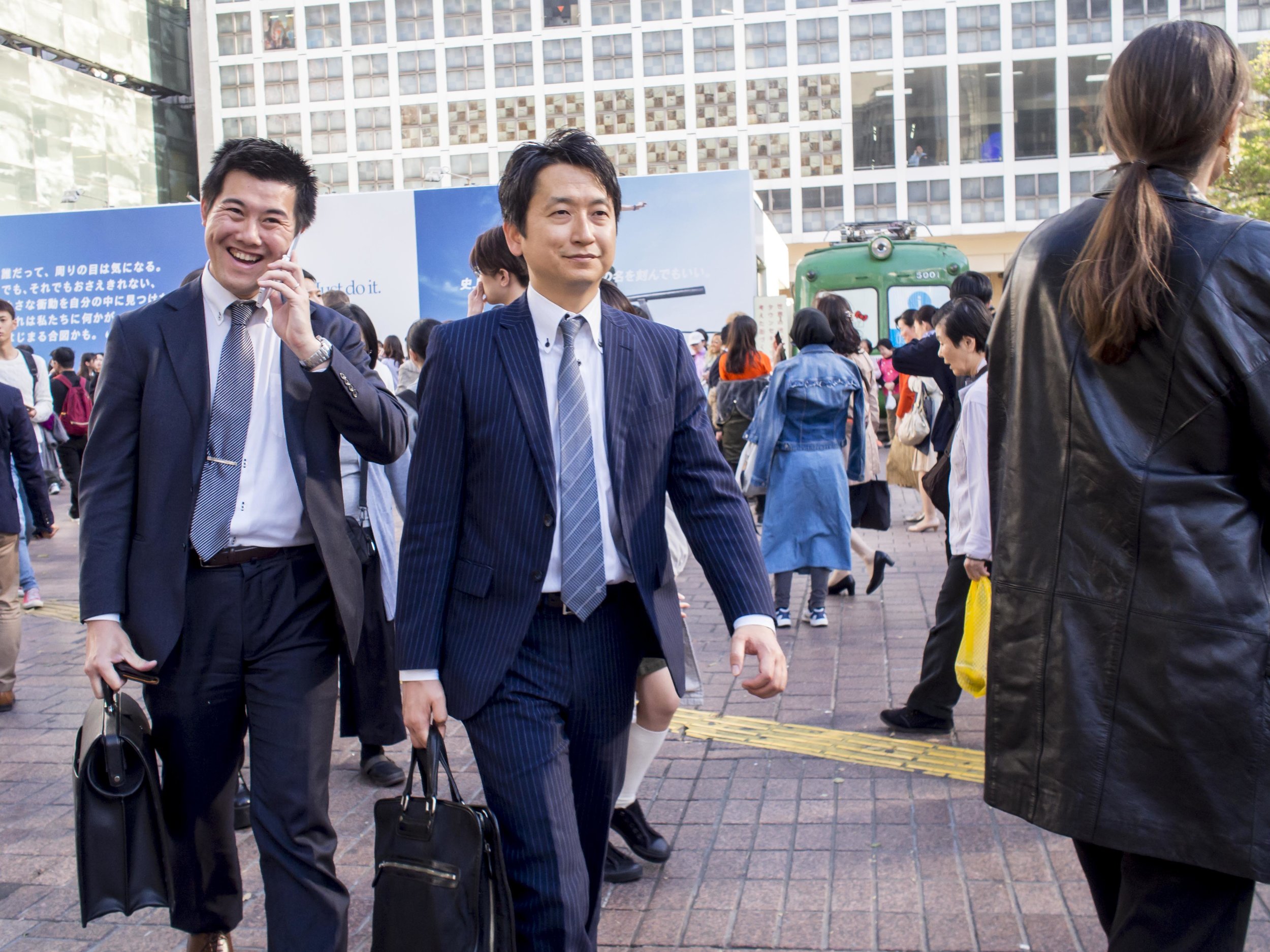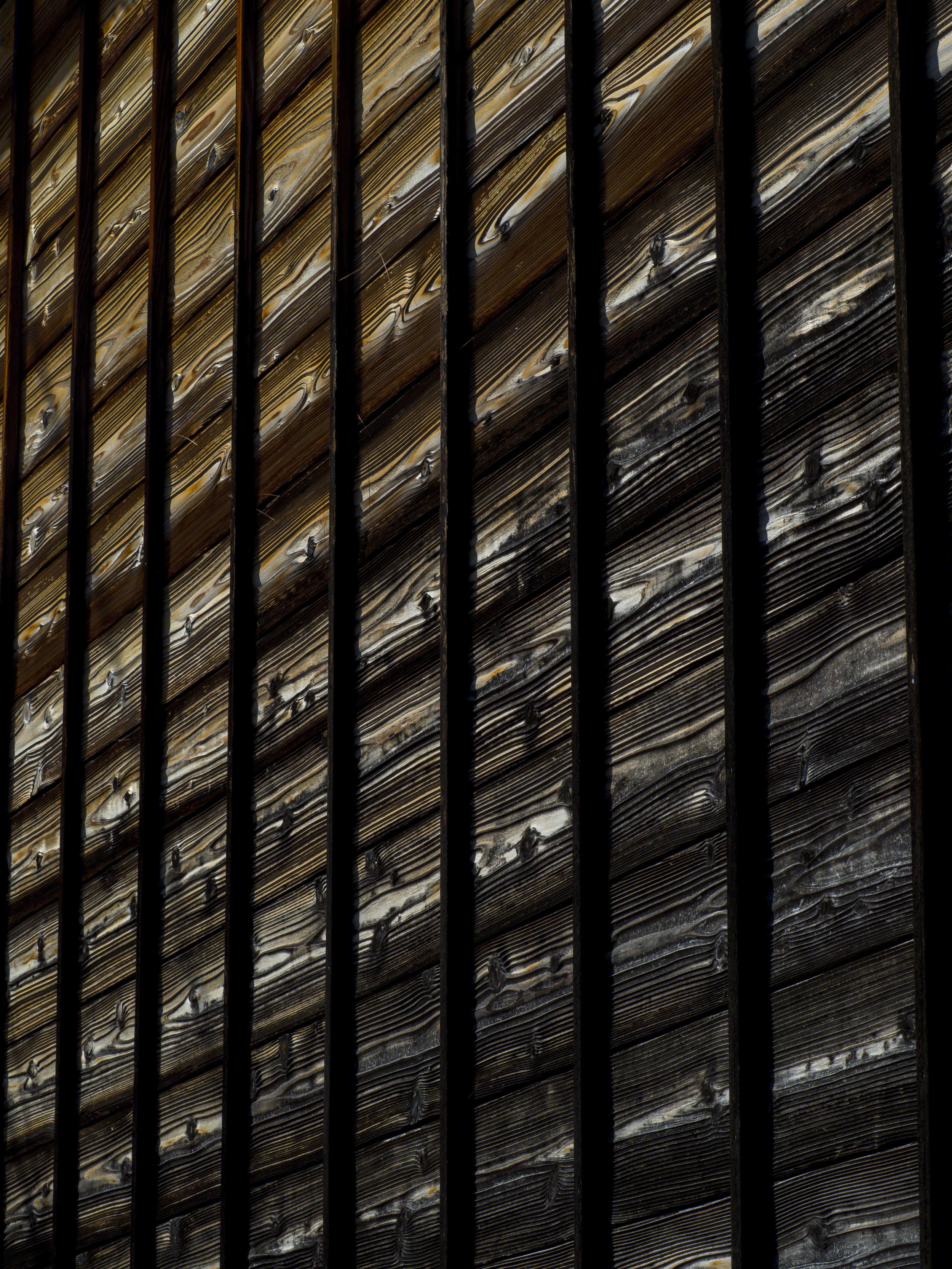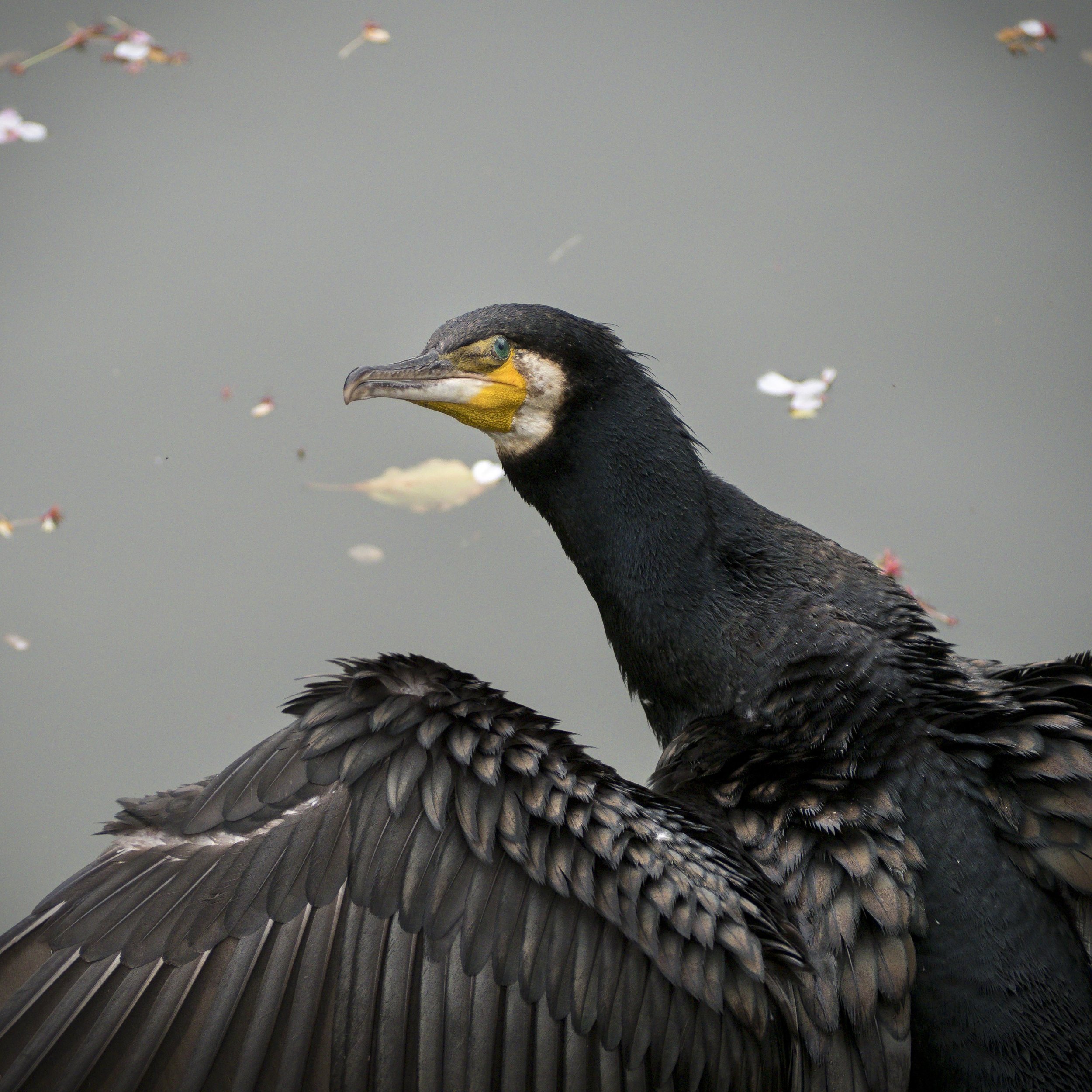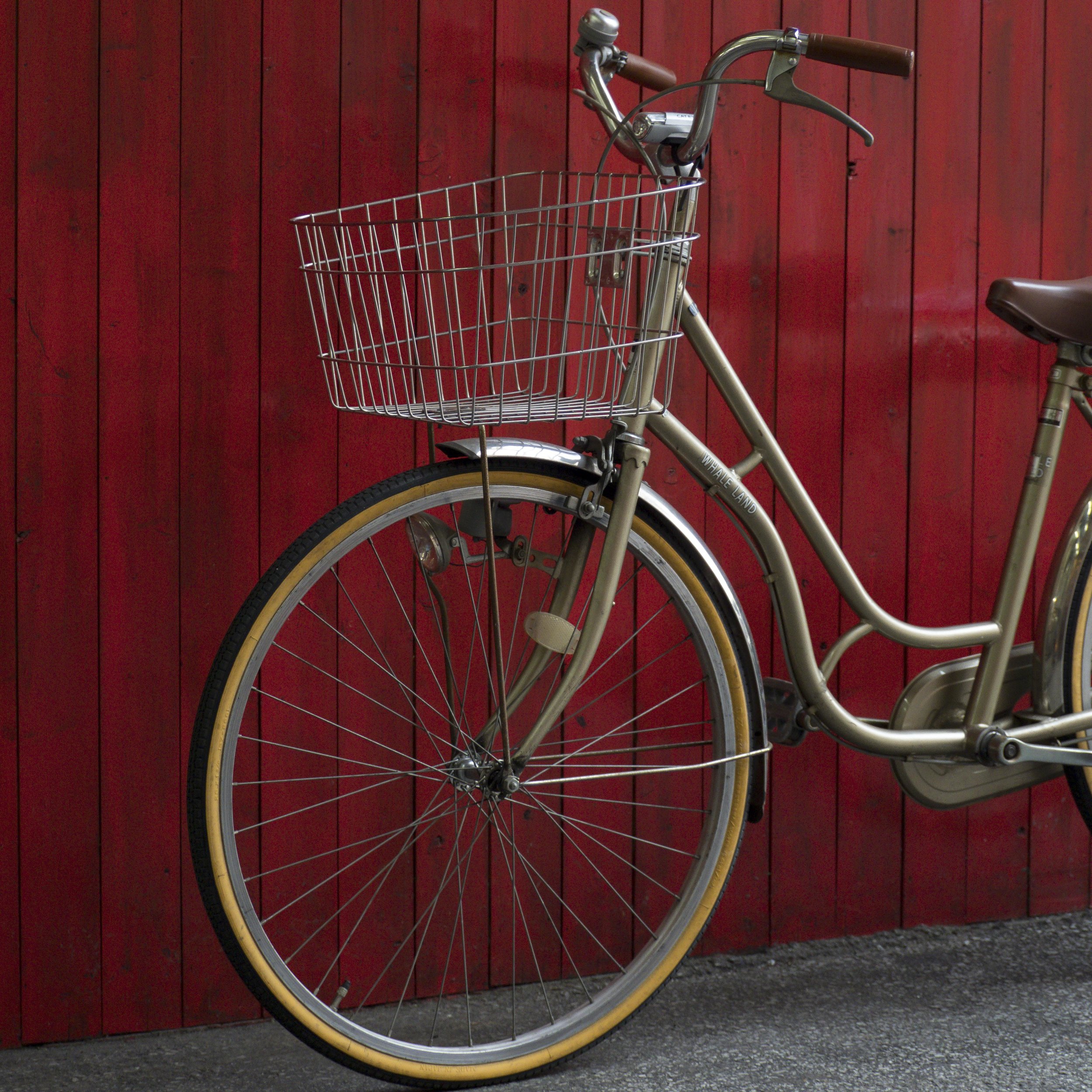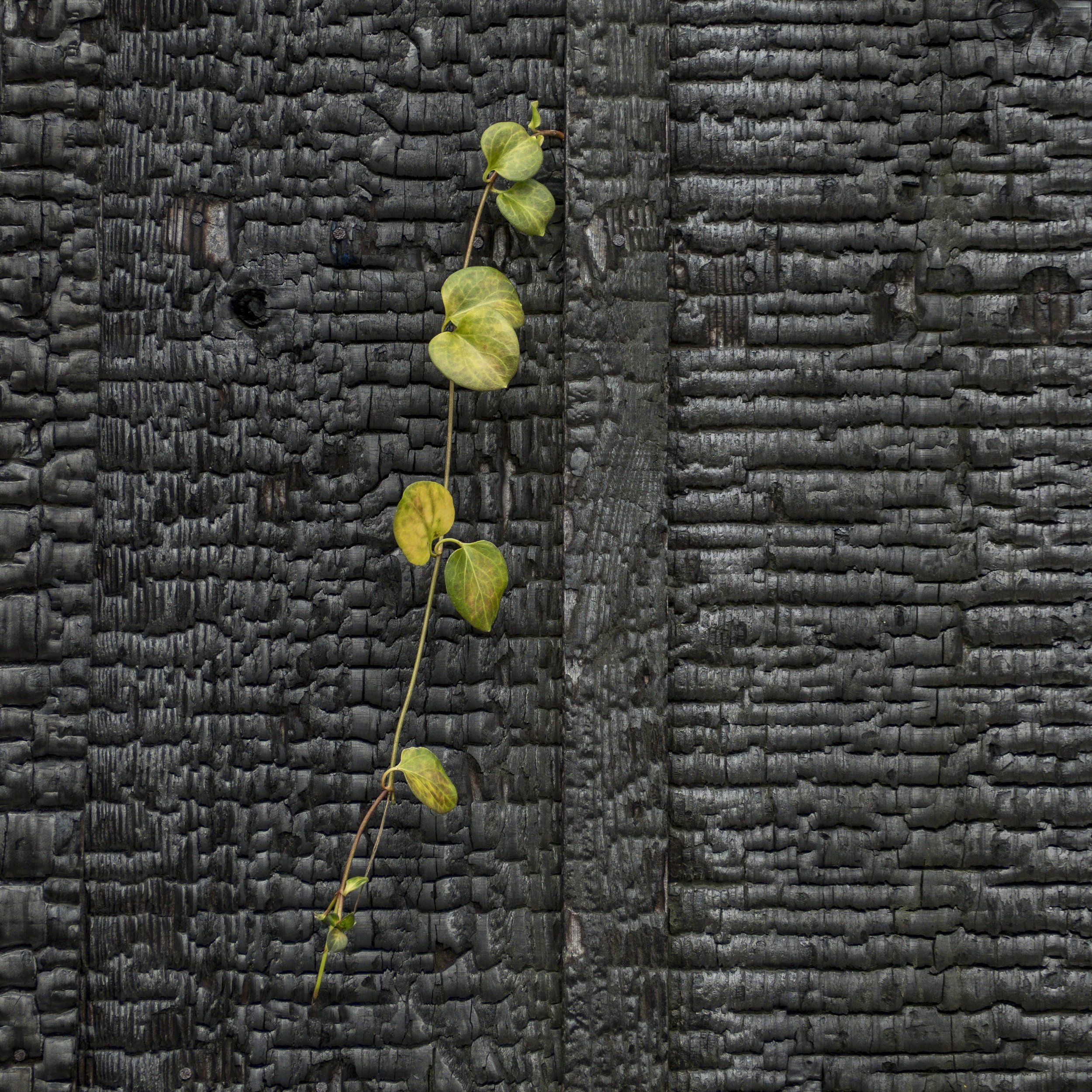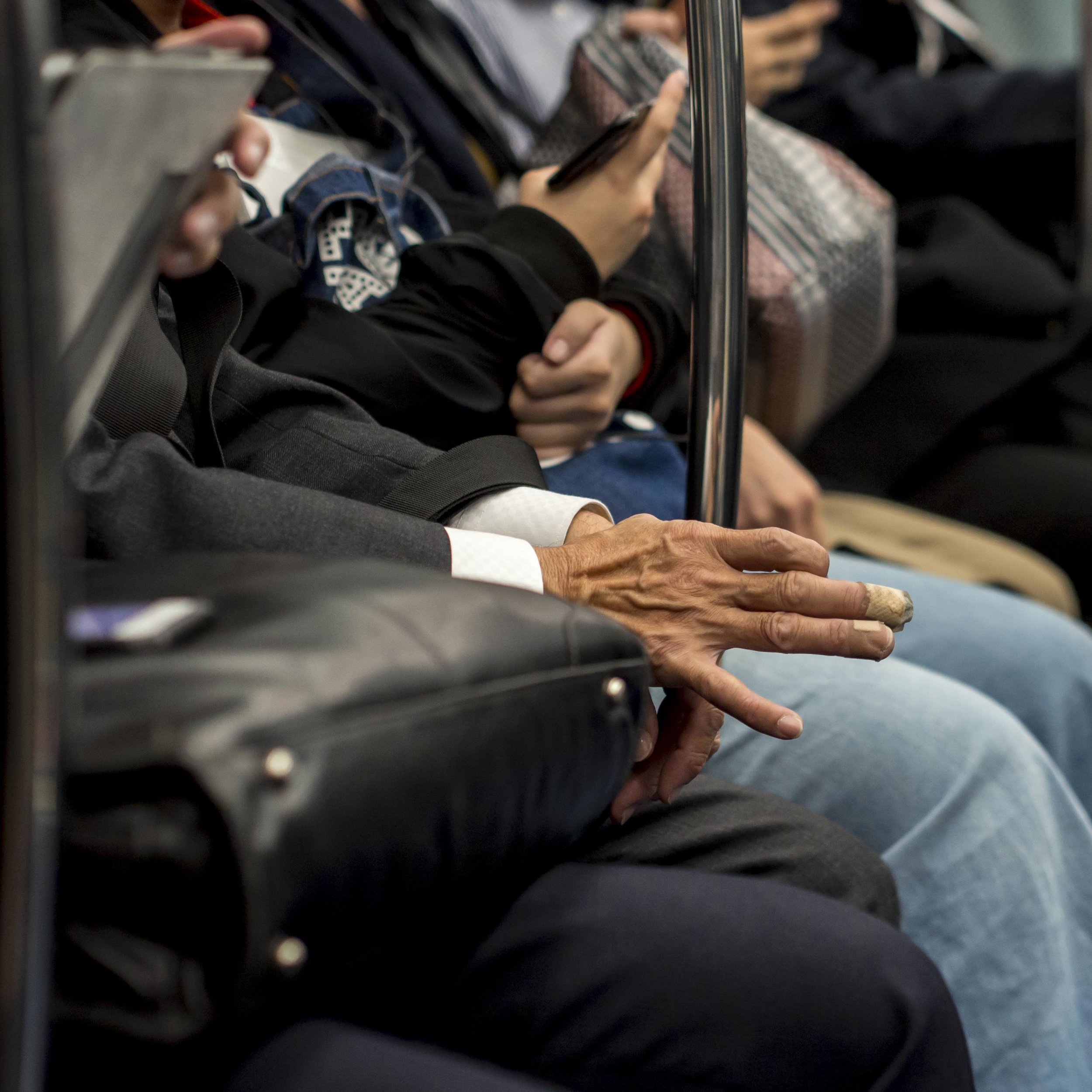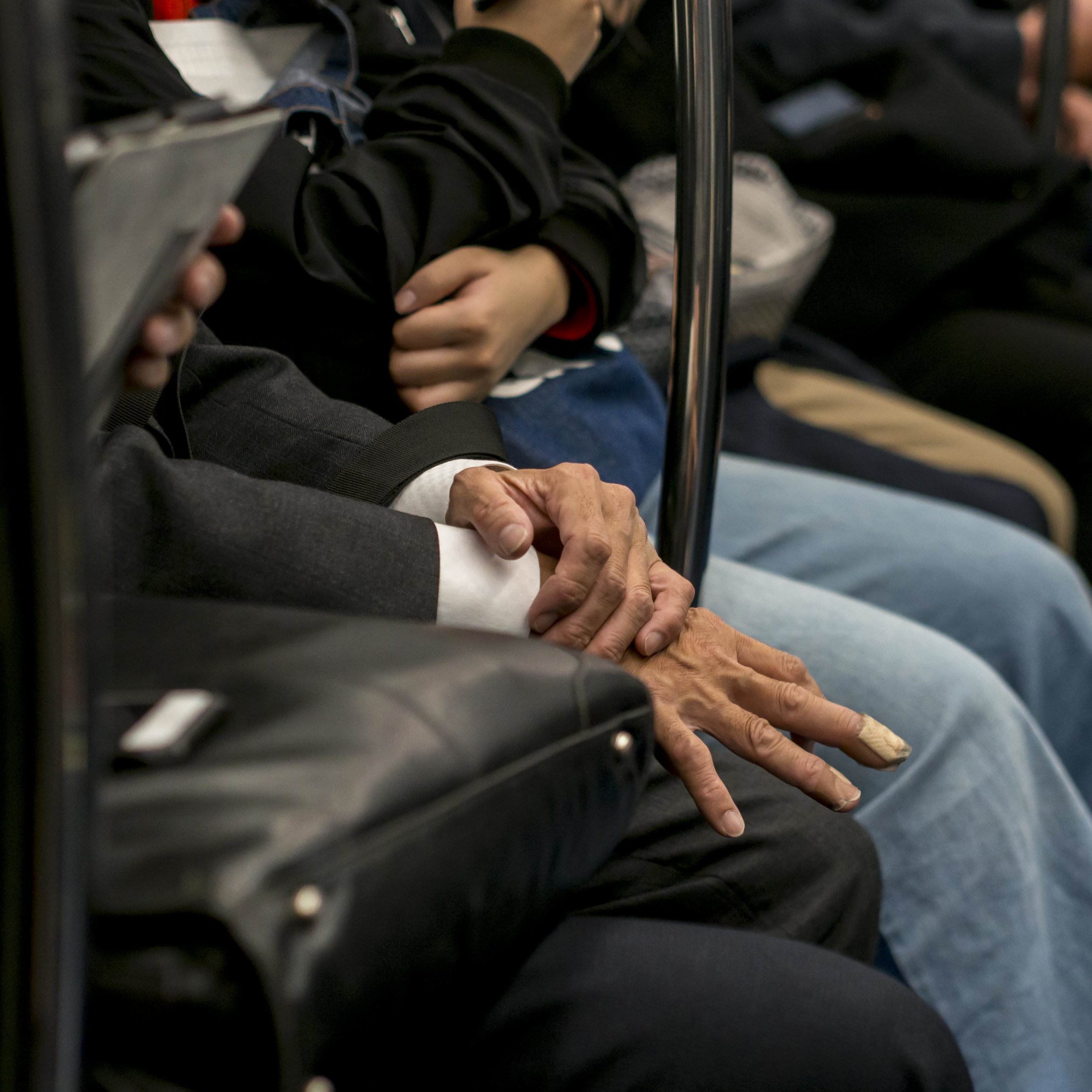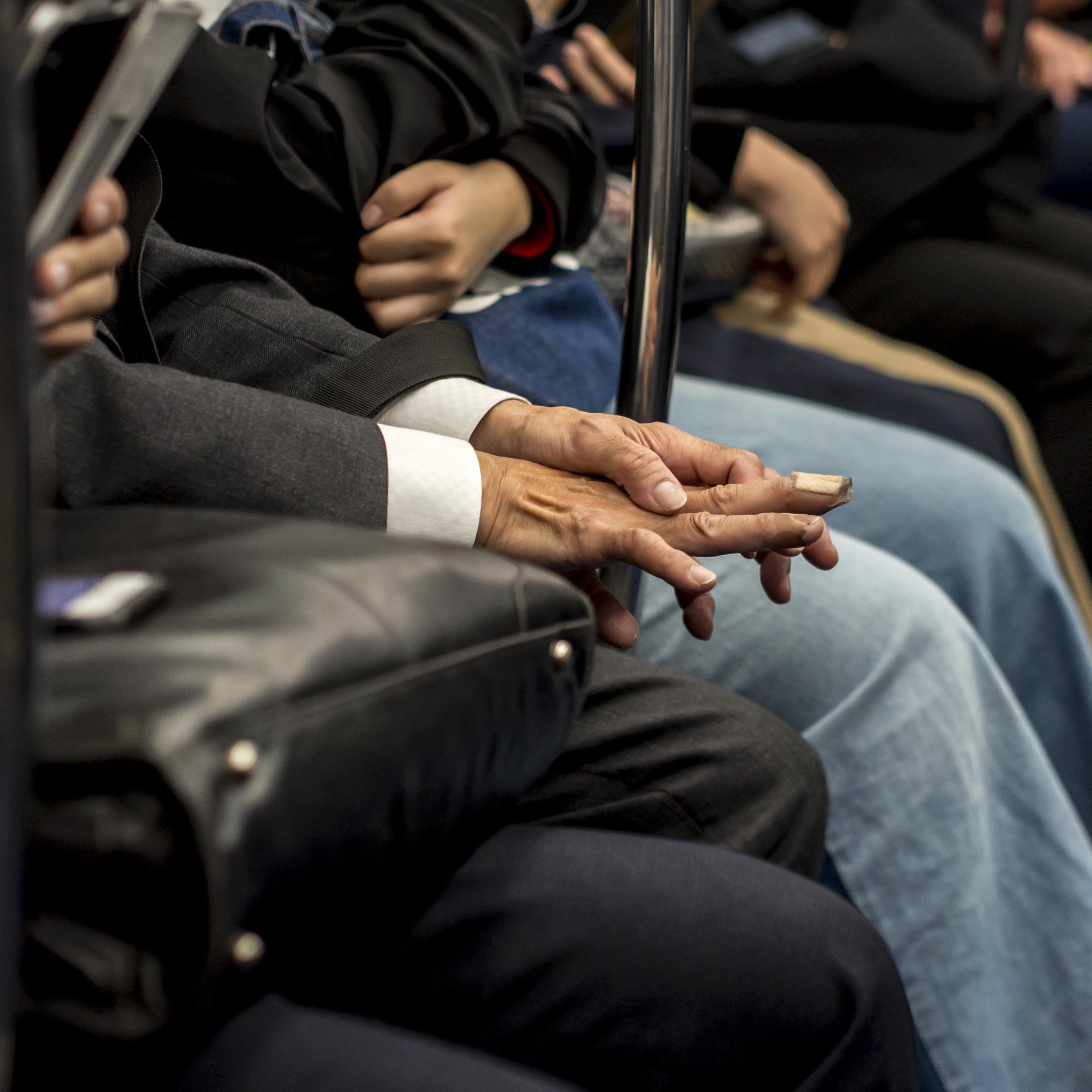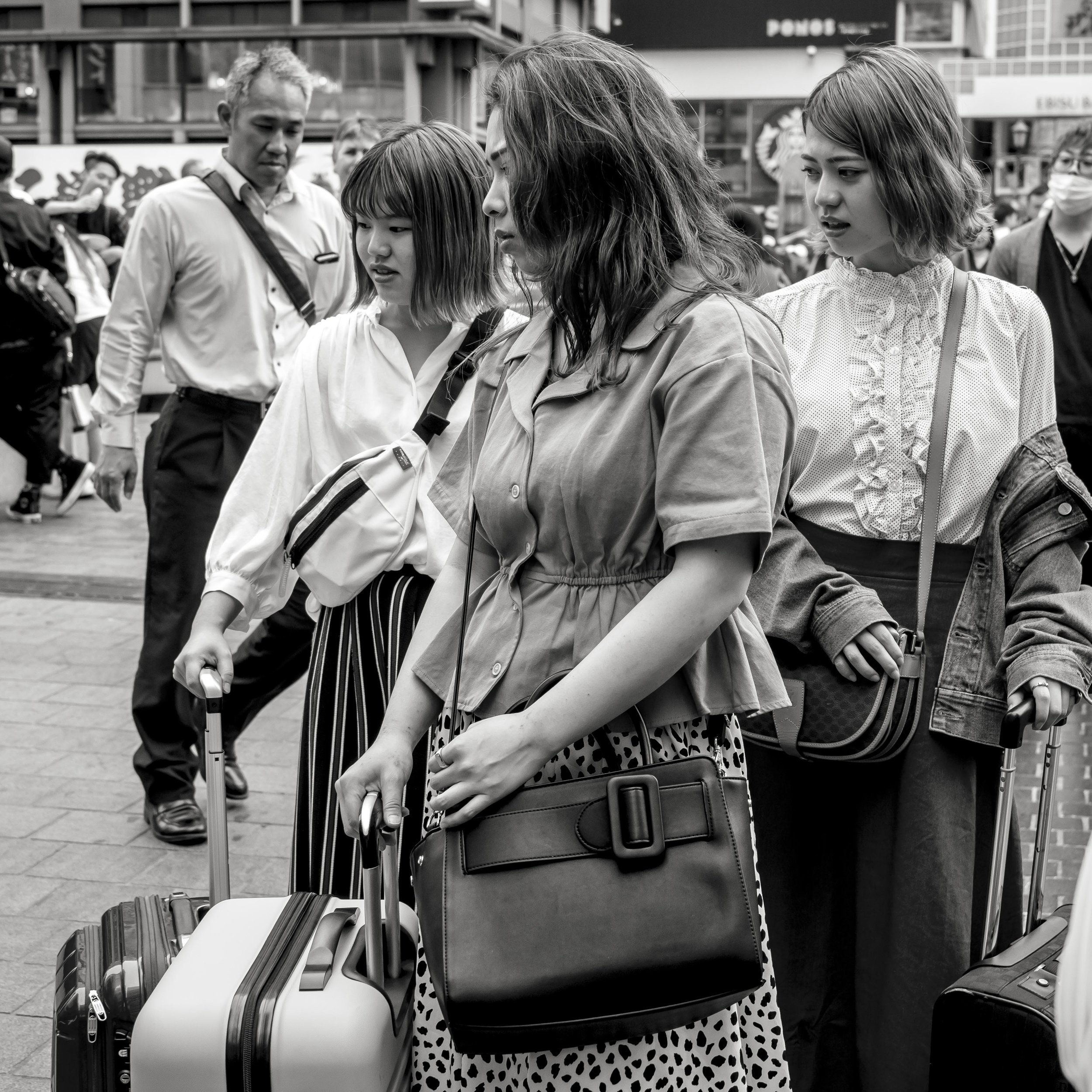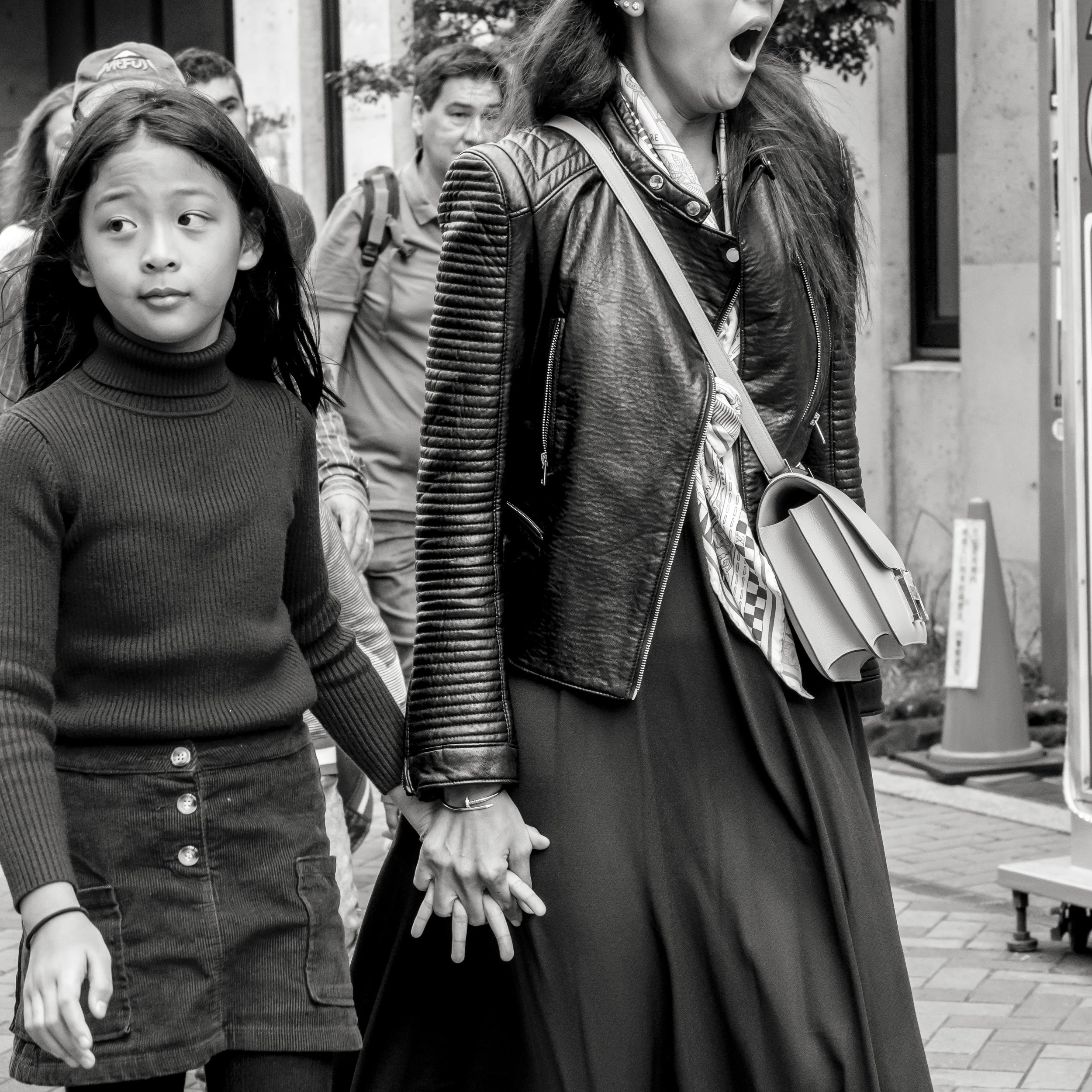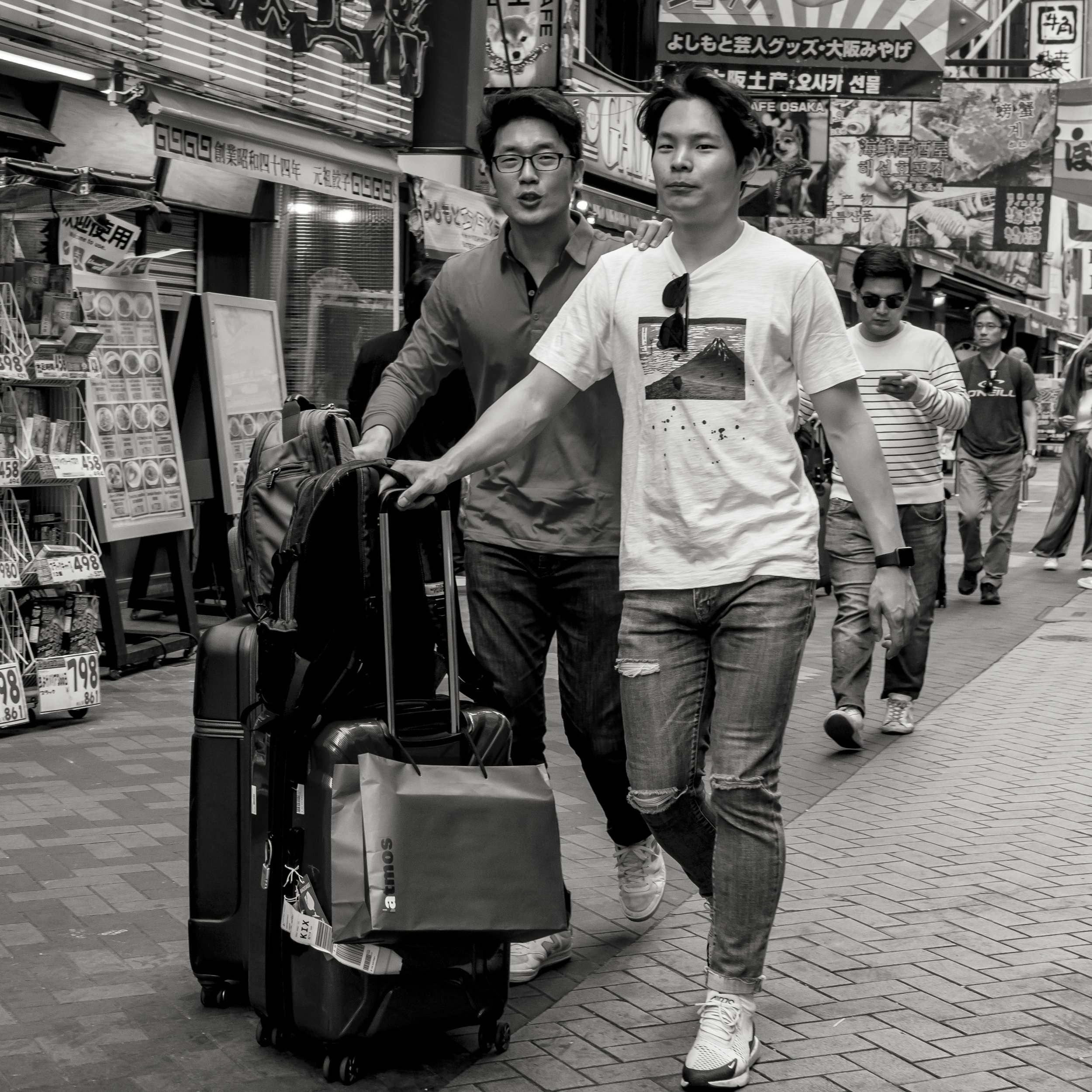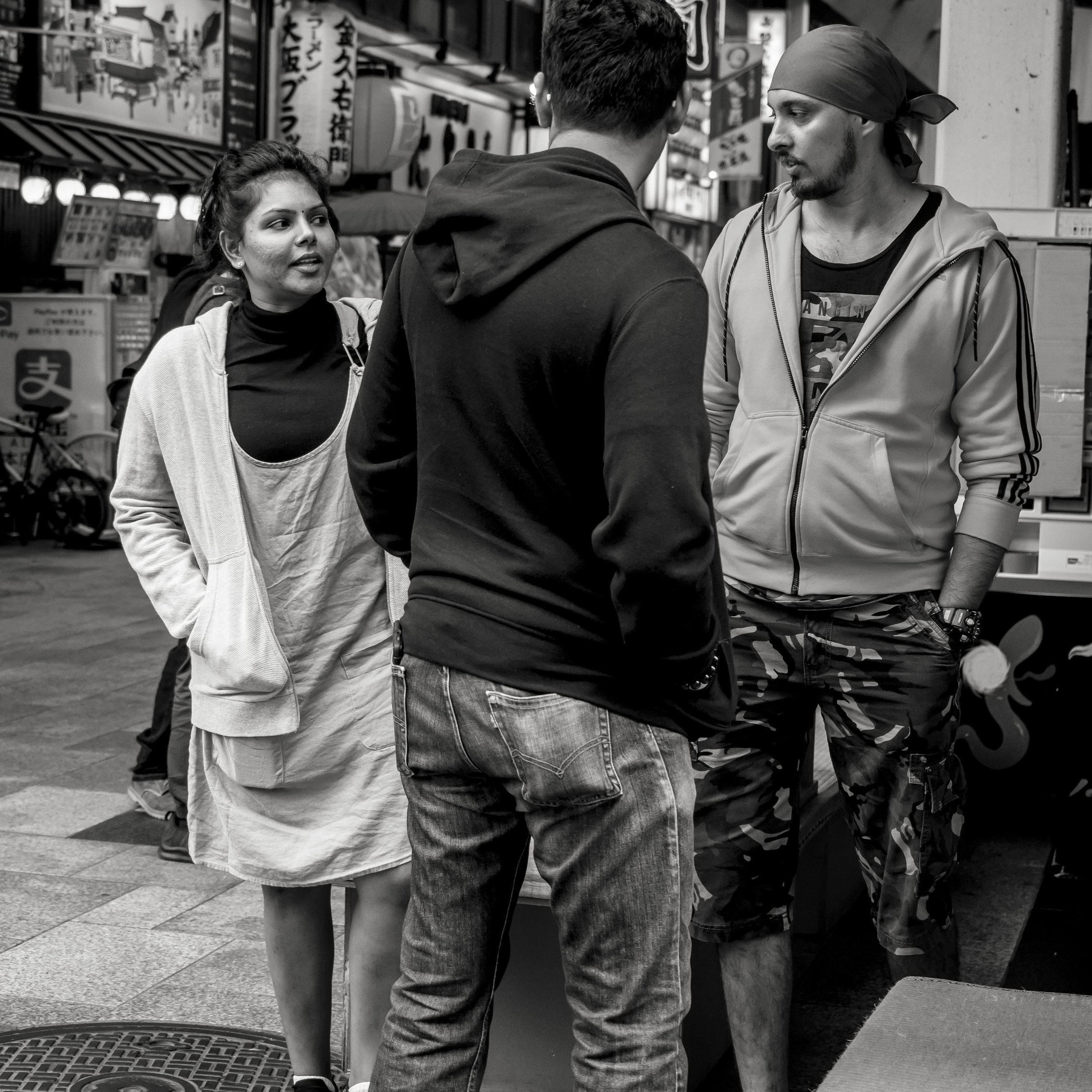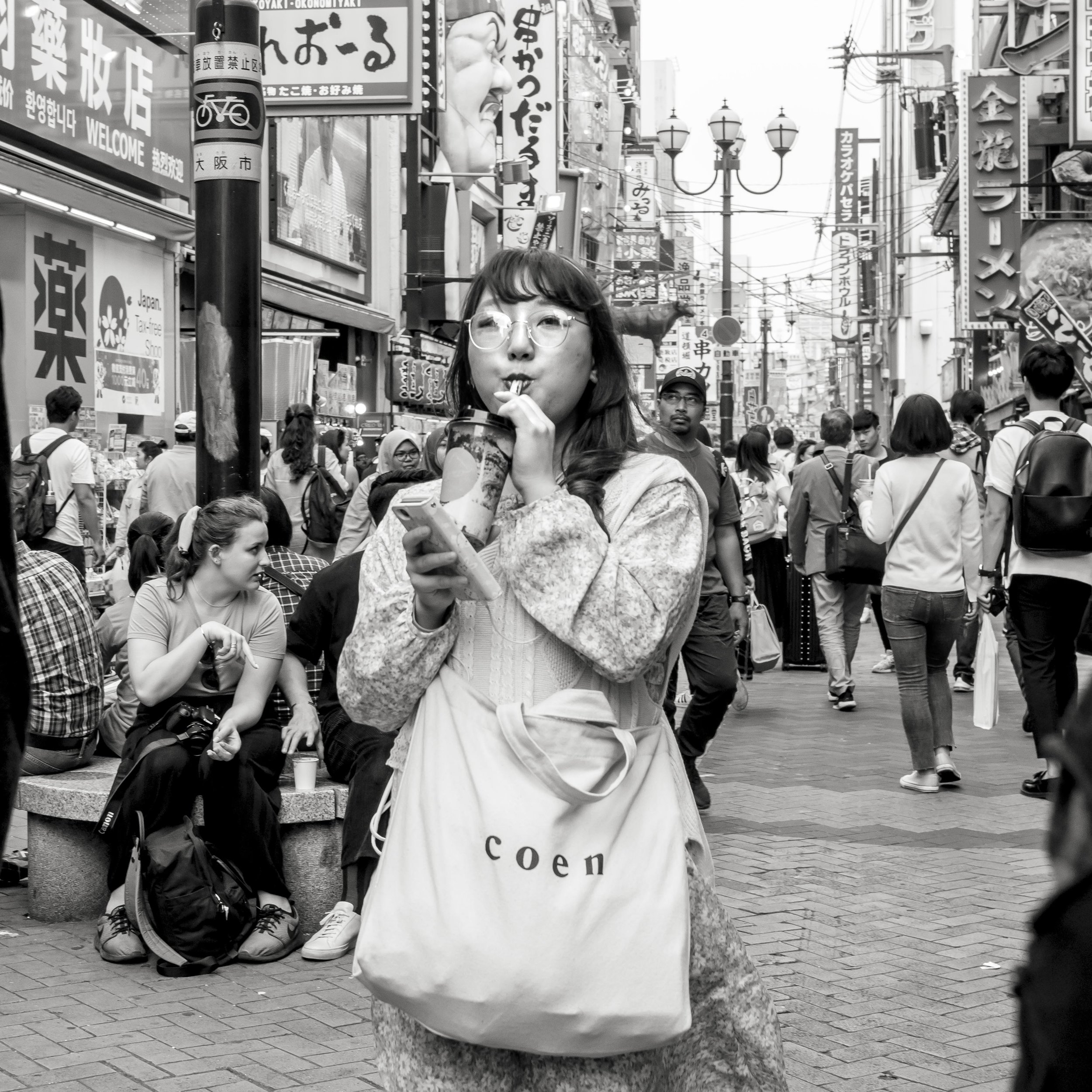A Hive of activity as always.
The Relative Value of Lens Speed
This trip forced on me a change of basic technique. Loosing the use of one camera very early on, made me rely on a single camera and a pair of zoom lenses, which is not how I usually work.
The three primes, work horse lenses on every other trip, sat idly in my now uselessly overweight bag leaving me both a little frustrated and guilty that I was not using them. On the last night in Kyoto, I decided to go light and only take the 17 and 45mm lenses.
The value of their faster apertures soon came back to me, especially the 17mm lens’s very practical long transition Bokeh.
The true value of this lens comes with it’s ability to hold coherent detail in well out of focus areas. This matched with it’s slightly wide angle of view and small focal length (due to the format) makes it ideal for street style grab shots at wide apertures. This benefit comes at a price of course. You have to be aware of these included elements. The first image below could probably do with a little cropping to get rid of the left hand figure, still coherent (irrelevant) even at f1.8.
The main subject in the second image below is out of focus (best focus fell on the man in the hat to the left). If this shot was taken using my 12-40 or the Panasonic 20mm at equivalent or even slightly smaller apertures, this focus error would be a lot more obvious.
First the 17mm wide open or at F2.
And the 45mm, again mostly wide open or near.
As an ideal contrast to the 17mm and designed more commonly to suit, this is a true portrait lens with smooth and rapid Bokeh transition or in practical terms it easily makes a “hero” of the main subject. I personally (and this is highly personal), do not like to much the overtly super-Bokeh look. I generally prefer to have some subject context rather than just pleasantly smooth mush, so if I owned for example an f1.2 lens, after the one trick buzz of very strong drop off was exhausted* (although I fully admit it has a practical use to reduce ugly backgrounds), I bet it would be used at f2 or 2.8 most often, where it would have little benefit over the equivalent f1.8 lens.
For example the middle image of the set above, is a messy image. It only works (if it does at all for you) because of the balance of the messiness. With a faster aperture or longer lens, the plane of focus would be more defined and the out of focus subjects, the man’s sleeve and the distracting blob over the woman’s eye, less so. Would it make for a better image or not? I feel the “painterly” rendering rather it has rather than the more modern sharp/soft dynamic suits it better.
If you love your full frame, fast lens, super soft and powerful Bokeh rendering, then fair play and it is as relevant as any other technique, but remember, it is a bit like sugar. Too much can be addictive and mask other flavours. The best aperture may not be the widest available. A customer/colleague of mine recently showed me a series of work place portraits taken on his full frame camera a with an f1.4 105mm lens used wide open. The sharpness and smoothness of the Bokeh was impressive, but the strongest visual element in the images was the row of perfect “Bokeh Ball” yellow lights in the background, taking much of the visual power away from the human subjects. As good as they were, I could not help but think that they and the biting sharpness of the lens wide open were the true success stories of the image.
*Fully achievable at smaller apertures or even shorter lenses if needed, even if some post processing is needed. My one true “cut-out” lens is the 75mm f1.8, which is a powerful tool when used properly, but it wears thin when over used.
Harajuku 2
Another set from Harajuku
THis fellow must have been following us as we came across him in Dotonbori Osaka
EM5 and 17 or 45mm, or EM1 and 12-40
Harajuku
A set of Harajuku images.
Haiku #81 Smoke
A Rich Vein of Light
Sometimes, usually when you least expect it, so be prepared, the gods of light smile on you. Often this is semi predictable, other times it just happens and you just need to be grateful.
On a trip up to Kanazawa from Kyoto, after we had explored all of the sights ear marked as worth while, the walk back to the station dished up some light that can only be described as “Theatrical” in nature.
It started gently enough.
Regulation random snap of a well travelled local.
Another just up the road with the usual “OK-ness” factor.
Then I started to get the feeling of something brilliant (literally and figuratively) burgeoning.
To the right..
then the left…
then the right again. Things were looking exciting, but no winner yet.
When the light takes on a character closer to a Hollywood film set you realise that the Hollywood look is only trying to control that rare perfection natural light is often stingy, but better with.
“Glow-acious” as Brett Western puts it.
Just down the road,
Then with added human element.
Content at this stage with a decent haul of morning tourist images and some more artistic ones later, I almost packed my camera away, but my wife suggested we veered left, away from the station and continued to enjoy the beautiful light.
The real mayor and city council of Kanazawa.
One of the many reasons I married her is her solid intuition.
Even the ugly can take on a majesty with good light.
On we went, seemingly unable to escape the drama and beauty of the afternoon.
Not sure where he came from, but I turned around and he was magically there.
Reassuringly, the EM1 has a similar rich and smooth highlight roll-over as the EM5. Ideal for this light.
Deeper into the tall buildings the light started to reduce in intensity.
Then it “bounced” back when we turned around to go home.
Something about that spot.
Council chambers in recess.
Then we started the walk back to the station.
Not so much a study of light, but certainly one of effort.
Still feeling it.
Finally back to beautiful station building.
As I and many others have said before.
Light is everything.
As a side note, every image was taken with the 40-150 kit lens. Probably not something I would have contemplated a few months ago, but there you go. My 75-300 would have been too long for several of the images and the 12-40 too short. The 12-100 would have been ideal and certainly optically better, but 3-4 times as heavy.
Fun at the Ball
Fun with “Bokeh Balls”, or how to turn a pet hate into a bit of artistic licence.
All photos taken at Kyoto train station with the EM1 and 40-150 kit (probably not the cleanest Bokeh, but all I had, so perfect).
Family in White and Red
Three Policemen walk into a Bokeh party.
Father and Son
Puzzle
One of the things that draws me to photographing people is a natural inclination to be absorbed into their lives. When taking a mutually consenting portrait, I feel the first minutes should be spent without camera in hand. Time getting to know the person and the things that define them should come before the camera is applied.
In street situations, I feel the opposite is true. That highly desired intimacy and spontaneity is only possible if the process is entirely one way, anonymous, instinctive but always respectful.
It is also important to remember that light is the true hero, even if the subject is more mundane.
Haiku #80 Temple Textures
Contradiction as Reality
These images were all taken from the basically the same position on a road just outside of Kyoto proper.
Devastation. Coming from Tasmania, I am well acquainted with the eternal tension of preservation versus exploitation and the fine balance that has to be reached.
Beauty from devastation.
Beauty before devastation.
The Orange and White Taxi
Takes many forms
Haiku #79 Shin
Good Character
Once again I am disarmed by the warmth of spirit and dignity of the people of Japan.
Shibuya EM5 17mm
Harajuku EM5 17mm
Kyoto EM1 12-40. The fast transition of this lens punishes shallow DOF and any near misses, but it is smooth and gentle. It is also frikkin’ gorgeous, lush and sharp.
Kyoto Em1 12-40
Tokyo EM5 17mm
Some would argue that the “facade” they display is hiding a darker and vastly less happy reality, but aren’t deeply felt and practiced good habits better than bad ones?
Tea in Kanazawa
The old Tea district of Kanazawa. We rate this as one of the better “traditional” areas we have been to.
Very active, very lived in.
Haiku #78 Kurashiki
EM5 17mm Shibuya crossing
Big Day out for an Old Friend.
Little did I realise that tis would be the last day one of my trusty old EM5 cameras would give me. I cannot complain about their reliability (3 bodies with over 100k shutter fires each), but it still hurts to have one go.
EM5 17mm Harajuku
I may get it fixed, but like an old car, throwing money at it may be just a waste.
EM5 17mm Harajuku
I guess the acid test will be when there is only one left.
EM5 45mm Ueno Market
It is I suppose a great change in my life that I have worn a camera out, which was really not my habit when shooting Canon.
Haiku #77 Good buy EM5
Quite literally the last images the old EM5 mk1 took before we got back to the hotel. It is fitting I guess that the last two excursions for it were Harajuku and Ueno night market, as these were it’s happy hunting grounds in the past.
I have no doubt that the Em1/Pen F combo are more capable photographic units, but I will miss the unique look these little EM5’s produce.
Haiku #76 Dotonbori Glances
Haiku #75 Dotonbori
Taking Stock
Fresh from our latest trip, I feel it wise to take stock of technical and technique changes and gear performance.
Cameras
The EM5 mk1 I took (my least favourite) failed during the trip. It was fine for the one outing it had but the next time i went to use it, I noticed banding i the image. Luck was in my side as i shot an unappreciated snap of my wife sitting next to me and noticed it before I went out to with only.
Turning it off and on again, the sensor (or power supply) showed definite signs of “pink line” failure.
This limited me to one camera and a heavy reliance on my 12-40 zoom, rather than my preferred 2 camera/2 prime style.
It and the 3 primes I took became dead weight for the rest of the trip.
The Em1 performed flawlessly.
There are a few things I would change;
it and the zoom were a little too big for my liking, drawing attention and just being bulkier than I like.
The ISO setting in Aperture priority (set low for quality) and Shutter priority (set to Auto for adaptability) cannot be set separately, which got annoying.
The camera suffered from slow buffering sometimes, with brand new fast cards, even taking as long as 20 seconds to buffer one file if i turned the camera on a shot immediately. This will have to be investigated, but is probably just a little compatibility issue and I was shooting RAW and LSF jpeg on two cards at the same time.
The spongy shutter button when fired by thumb, forced me to miss a couple of shots.
On the bright side, the image quality and hit to miss ratio was definitely higher than previous trips, so a win overall.
My bias towards flip up over flip out screens is also changing. The ability to shoot from a low angle in portrait orientation is a plus.
Lenses
The 12-40, a rush purchase before a Christmas trip to see family, paid for itself over and over. It became my “2 lens kit” usually hovering around the 18 and 40mm settings. The focussing may well be faster, or at least more accurate on the EM1 than the 17mm prime and it’s balance of sharpness and Bokeh are ideal.
So fast, it could capture fleeting moments as quickly as i could compose them.
The crappy little 40-150 kit tele got a disproportionate amount of use and took a series of images that will prove to be my favourites from this trip. Apart from the stiff zoom mechanism, (so stiff it actually created a little lens mount play over time) it never made me conscious or concerned about using it. In tandem with the 45mm prime for low light work, it was just right.
The primes all performed as expected, but were not used much. The heavy 75mm only got an outing at the end of the trip to justify taking it at all.
Other
The TT Turnstyle 10l was a revelation. It limited me to amount of gear I needed (especially when the EM5 died) and never felt cramped. I even managed to fit a large table top Manfrotto tripod into it.
When fully loaded, it felt comfortable down the middle of my back and when half empty, it seemed to disappear. Any bag over a couple of weeks can wear thin, even just the strap can get annoying, but this one was definitely the best I have used.
The mini tripod I took was only used twice. I found the EM1 with the inertia of the 12-40 lens was capable of pulling of plenty of 1/5th to 1/15th of a second images for suitable blurred water images.
This was with the tripod. Without, the blurring is not as silky, but is smooth enough to avoid the “caught in motion” look.
Apart from the slight fear i felt when facing the bulk of the trip with only one camera, all went well and i adapted to changing dynamic.




